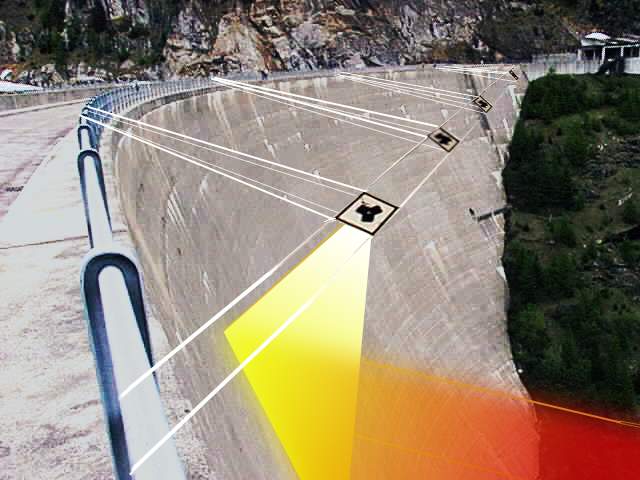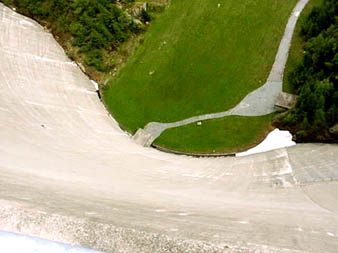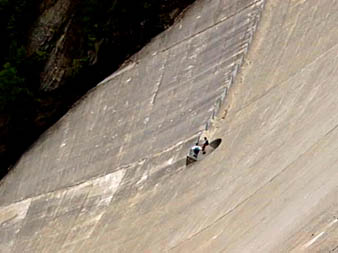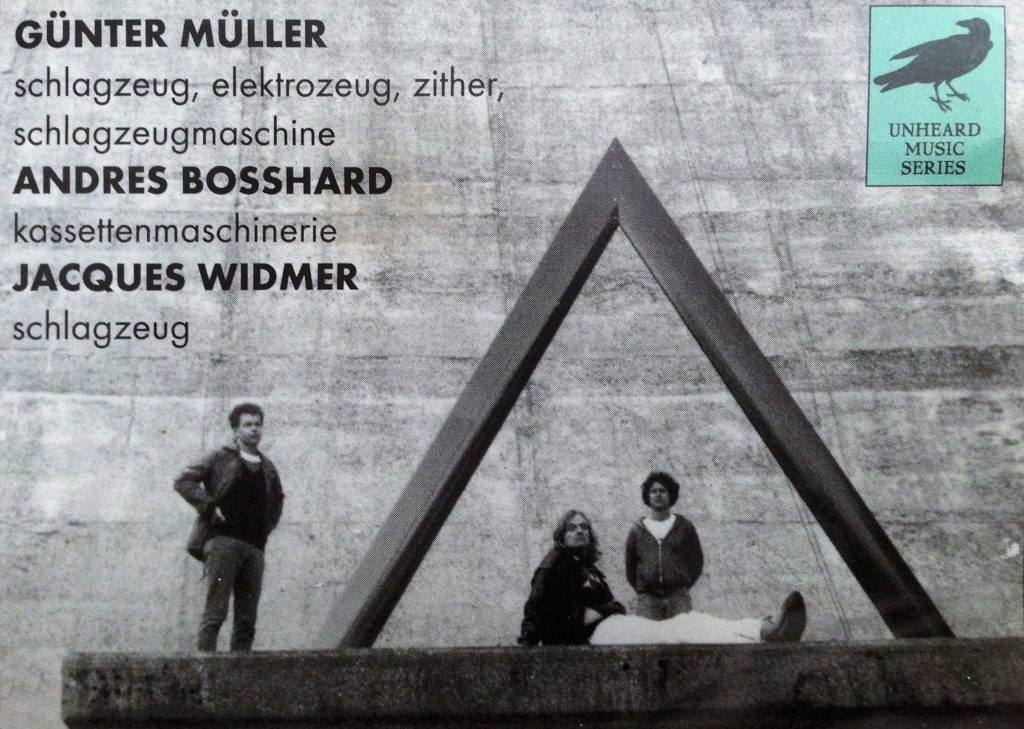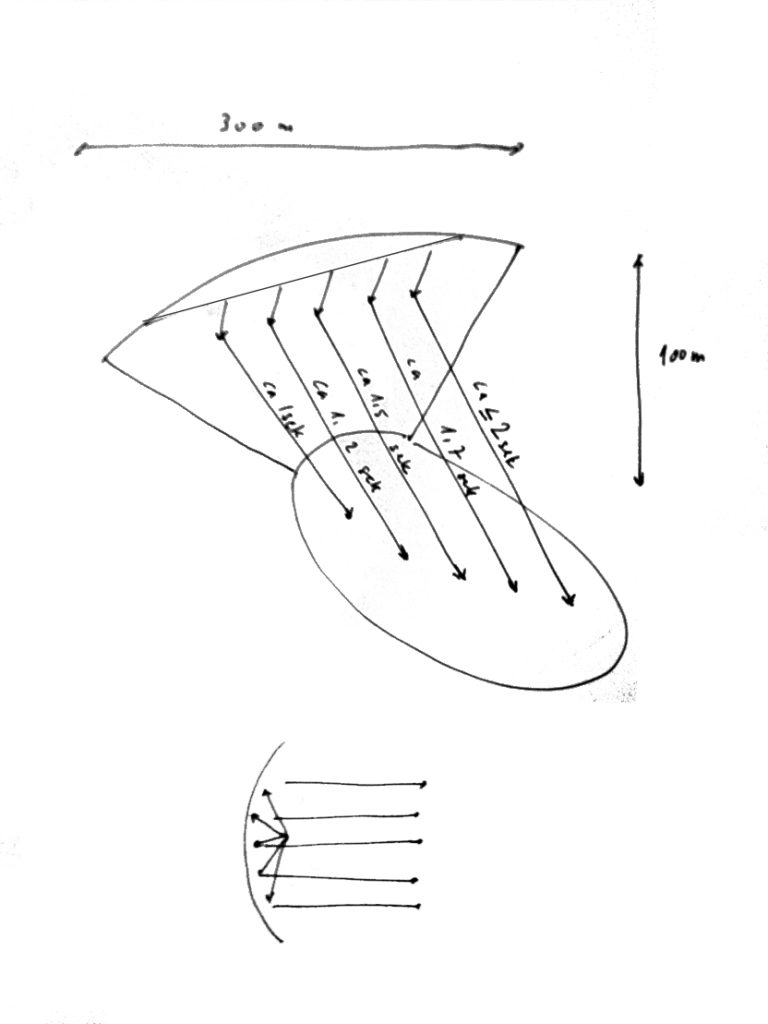Klangkomet
Sonar impact: flying, sounds from outer space down to planet earth, bouncing of the floor, mirrored from wall to wall, into the caleidophonic cupola and back to the open sky.
Der Klangkomet schwebt, sich vertikal um sich selber drehend, von ganz oben aus der Doppelkuppel im Eingang des Naturhistorischen Museums Wien langsam hinunter und verschwindet im Untergeschoss, um wieder aufzutauchen. Er weckt tausende von Echos der Marmorarchitektur mit ihren Nischen, Gesimsen, Säulen und Seitengewölben. Der monumentale Hallraum wird Schicht um Schicht abgetastet und Hörhorizonte scheinen in ungeahnter Klarheit aufeinander folgend eine Hörraumkaskade zu öffnen, die vom Knistern des Sonnenwindes, über die langwelligen Zyrruswolken zum atmosphärischen Donner, Vogelstimmen, Fledermausortungspeilsignalen, Tierstimmen, Menschengemurmel, Lavalachen, Wasserkochen und Tosen zu innerirdischem Borborygmen und dann zurück mit antarktischen Beluga sweeps, Seelöwengebrüll und Lachmövengeschrei zu Insektengesirr und Flüsterbäumen führt.
Für das Projekt “sonar impact” zusammen mit Paul Giger für Christian Körbl entworfen, Wien 2015.



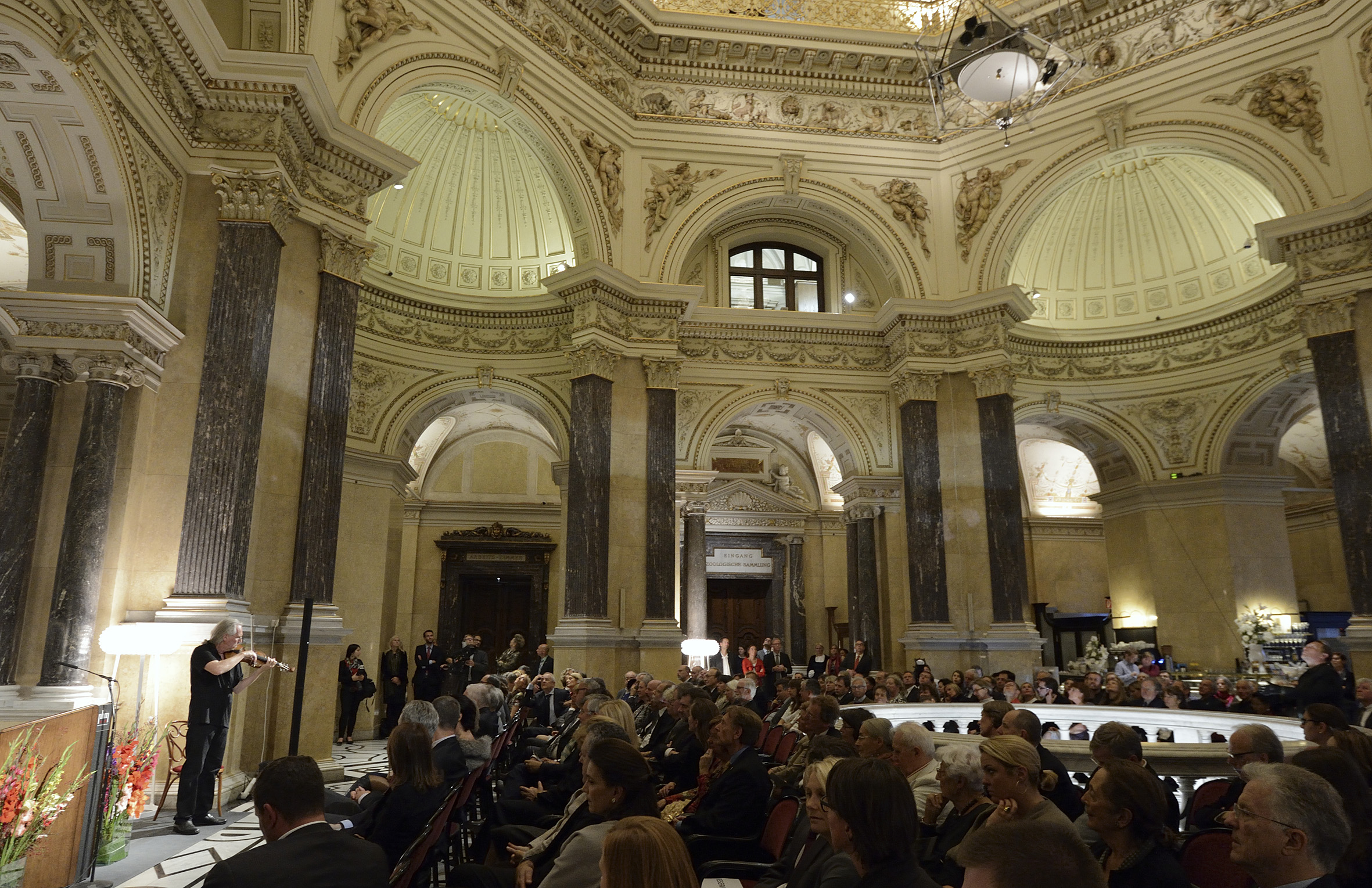
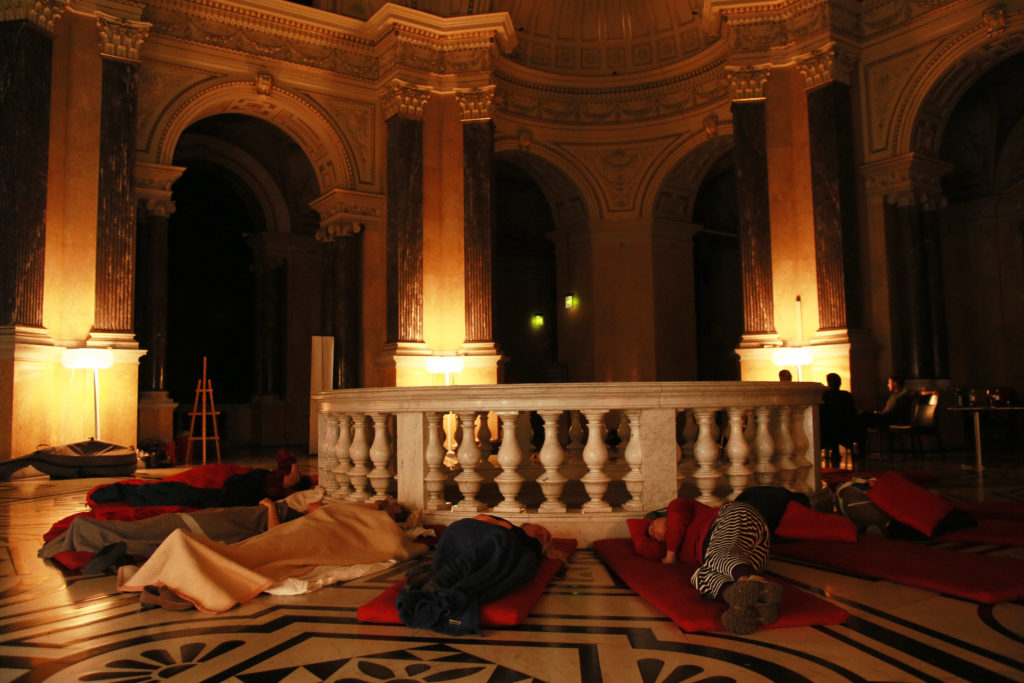
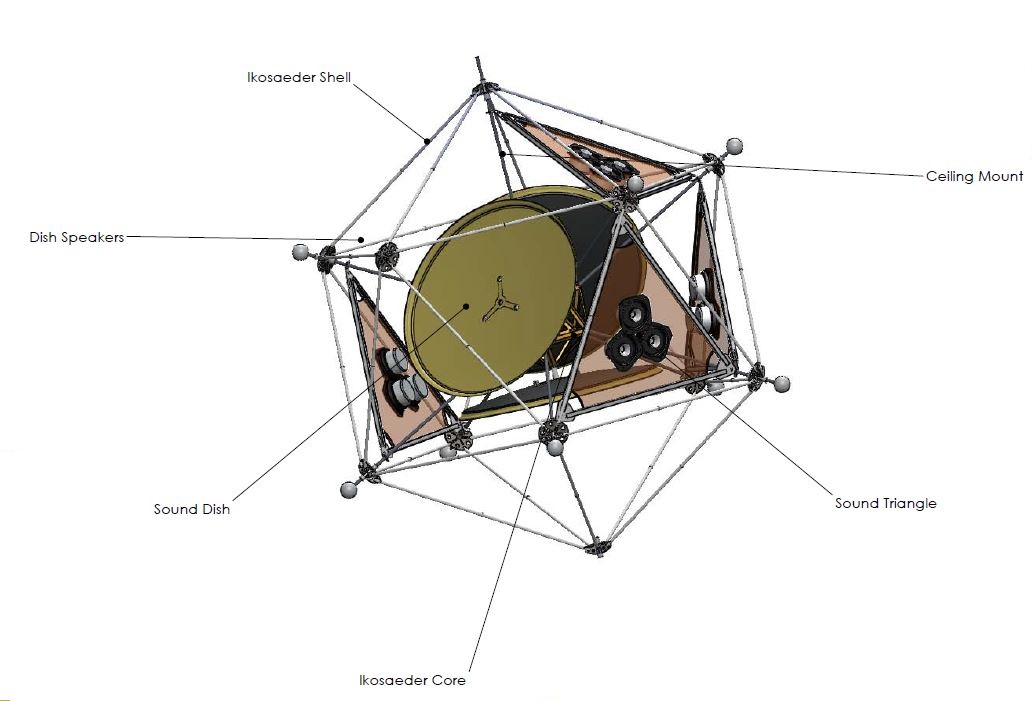
Klanghimmel MQ
TONSPUR_extra ∞ european_TONSPUR
ANDRES BOSSHARD : KLANGHIMMEL MQ
MuseumsQuartier Wien | 10.06.11–01.10.11
Choreophonie mit Beiträgen, Werken und TONSPUR-Arbeiten von: Zsolt Sőrés Ahad/Jozef Cseres (HU/SK), Tiziana Bertoncini (IT/SK), Maria Blondeel (BE), Matthias Frommelt (LI/AT), Sabine Groschup (AT), Marie-Thérèse Kerschbaumer (FR/AT), Via Lewandowsky (DE), Friederike Mayröcker (AT), John Oswald (CA), Michal Rataj (CZ), Tao G. Vrhovec Sambolec (SI/NL), Astrid Seme (AT), Magda Stawarska-Beavan (PL/GB), Wolfgang Temmel (AT) sowie von Andres Bosshard (CH).
Klanghimmel, Workshop. Klanghimmel Dokumentation, tonspur.at. Wien 2011



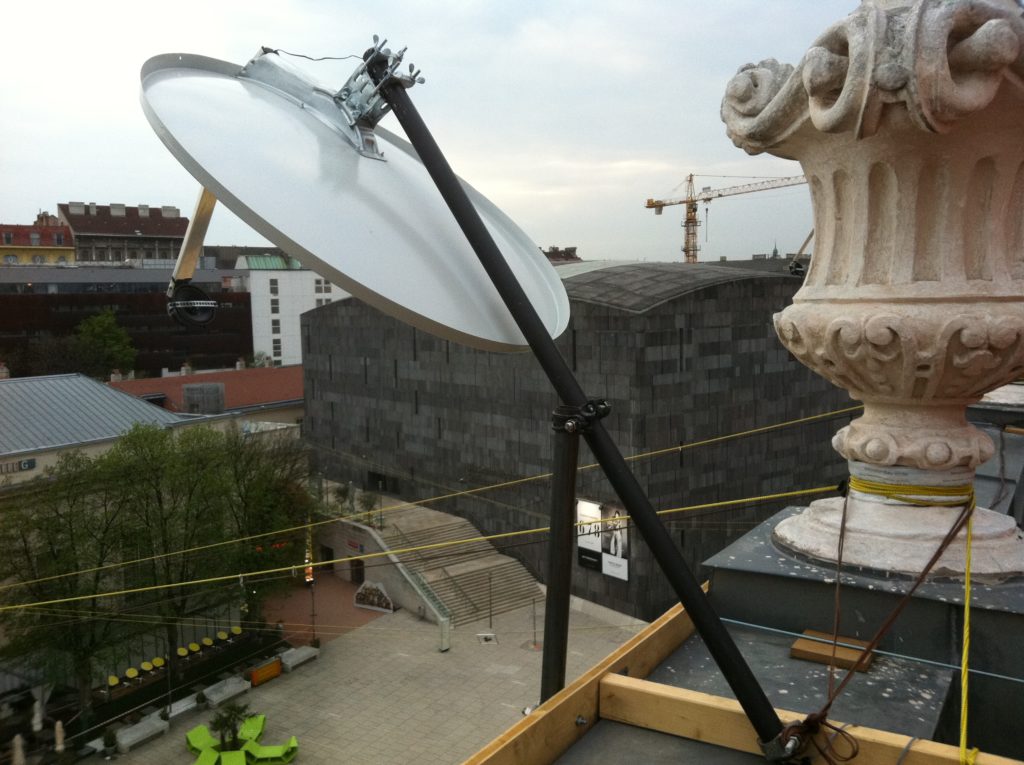
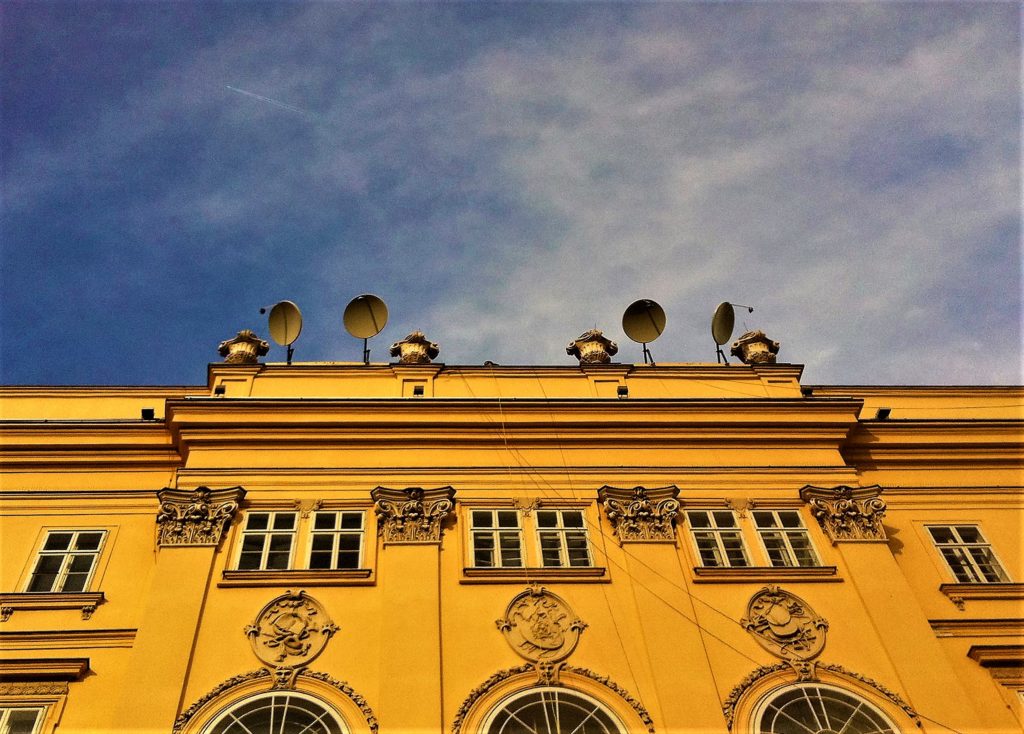
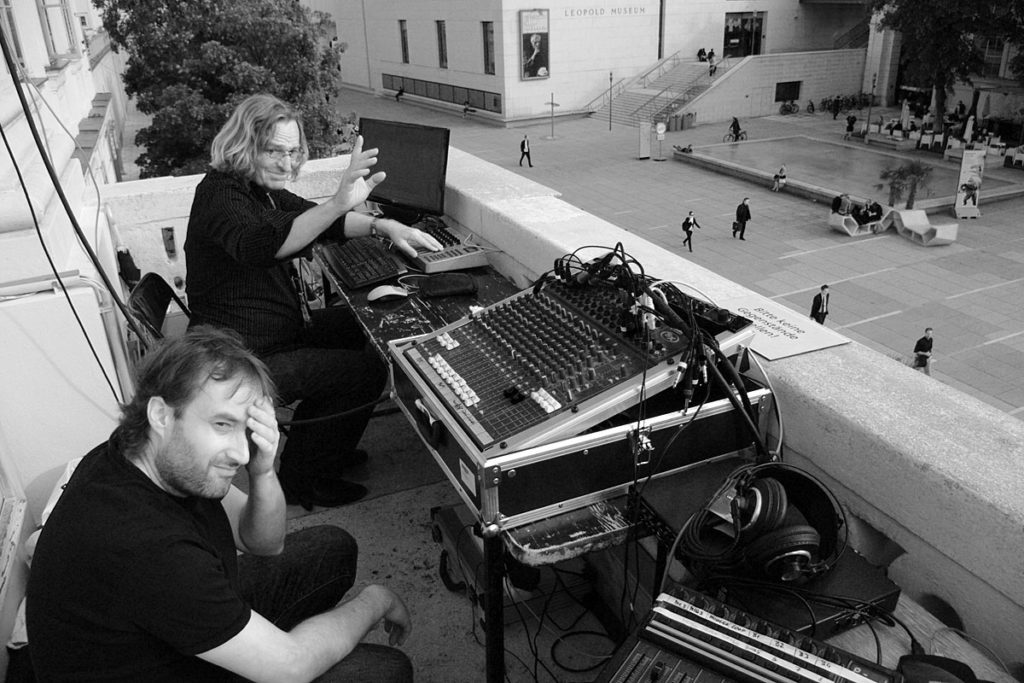
Flying Gallus
Der Jubiläumsanlass wird akustisch untermalt von der raumgreifenden Klanginstallation des Künstlers Andres Bosshard, der an der Expo02 den Klangturm gestaltete. “Flying Gallus” macht an drei Orten im Klosterhof gesammelte Klänge aus Vergangenheit und Gegenwart des Klosters hörbar. An langen, vom linken Kirchturm heruntergespannten Seilen schwebend, erzeugen Lautsprecher einen atmosphärischen Raum, der durchwandert werden kann. Ergänzt von live eingespielten Interventionen werden die barocken Schaufassaden zum Klingen gebracht. Die Installation – ein Gespräch des Stiftsbezirks mit der belebten Stadtlandschaft – soll dem Wochenende des Weltkulturerbes einen klingenden Rahmen geben.
Live bespielte Installationen: Anne Kneubühl, Roman Häfeli. Live: Paul Giger, Violine; Stefan Baumann, Cello. St.Gallen 2008.
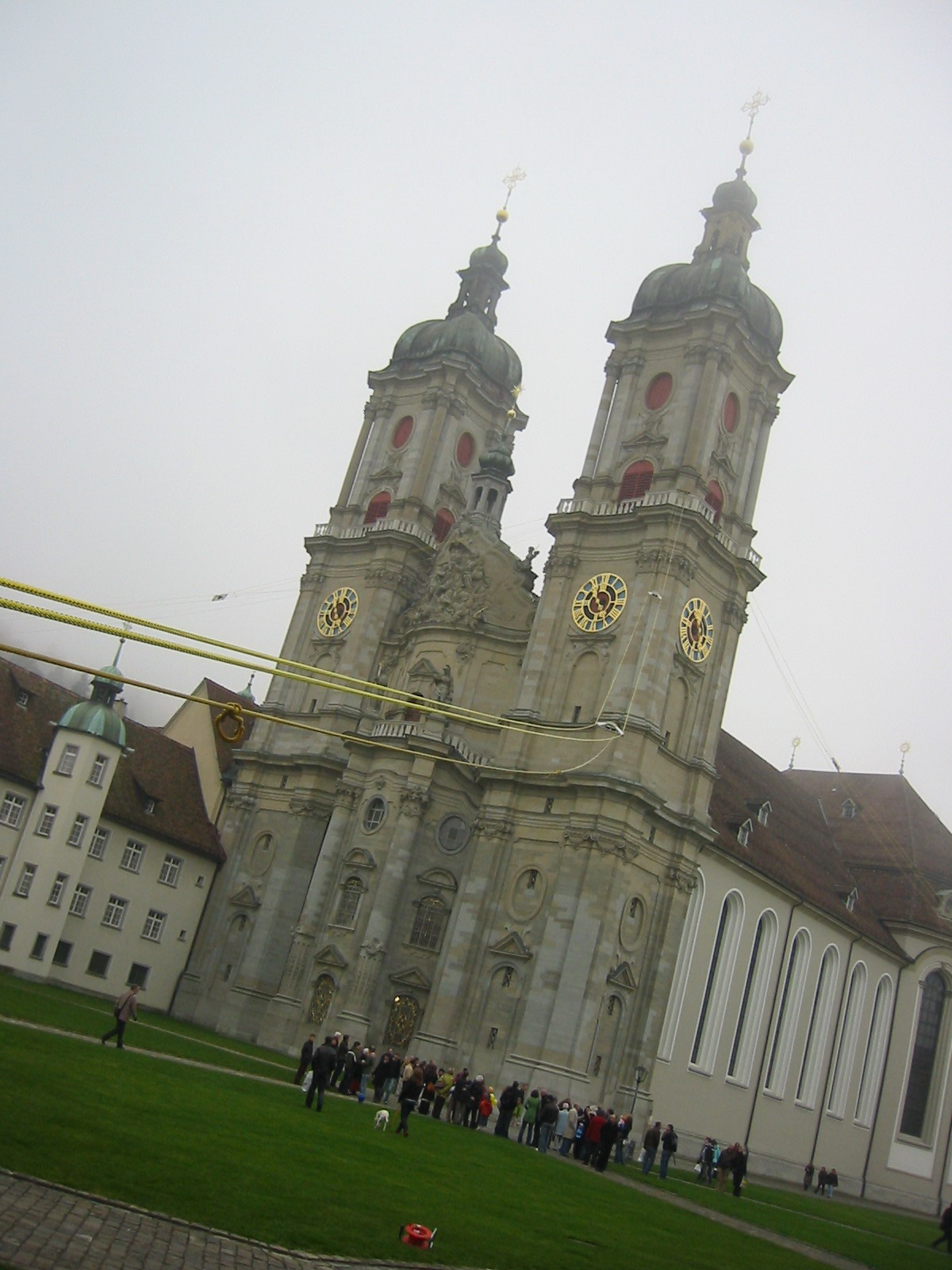
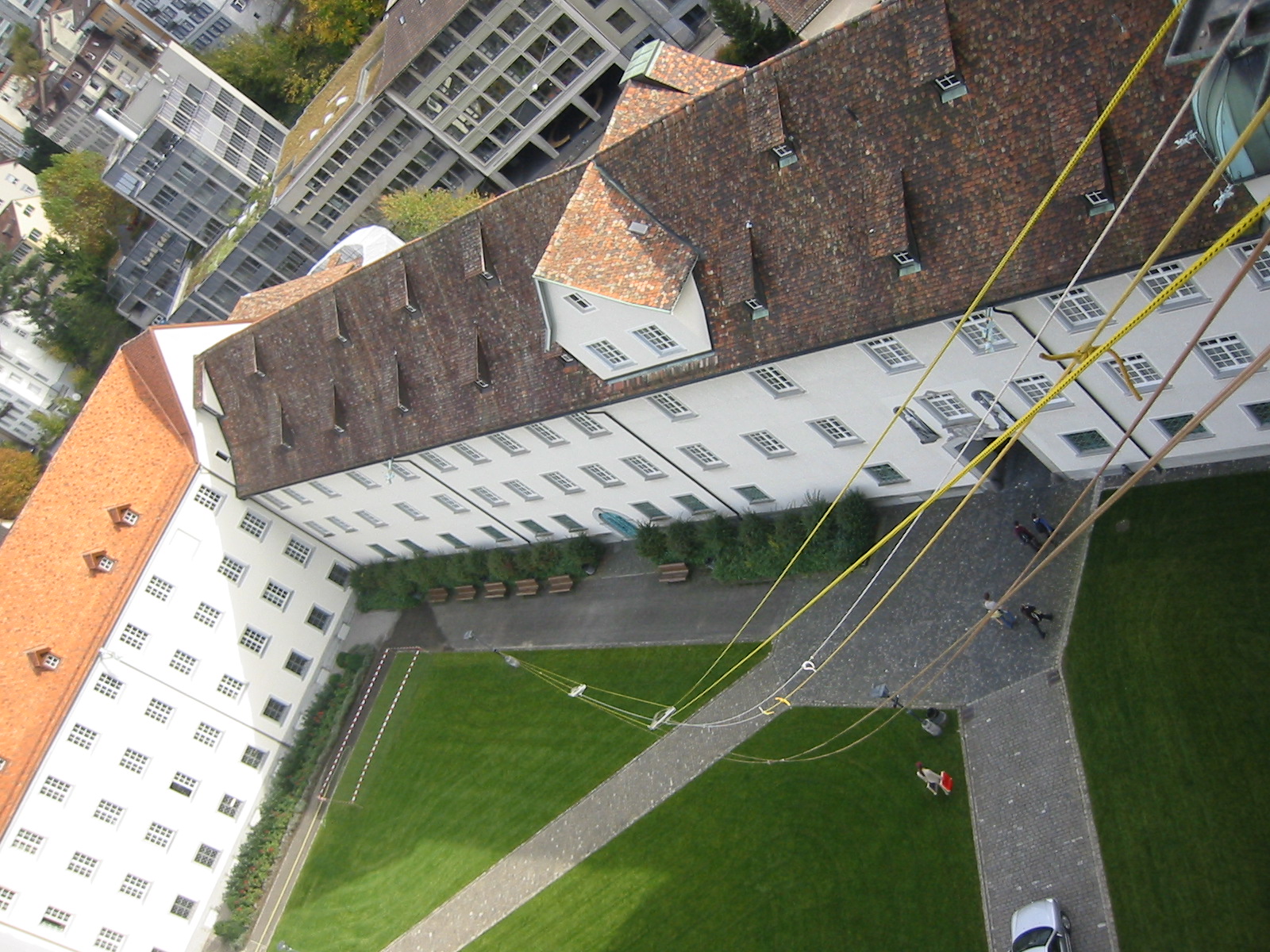
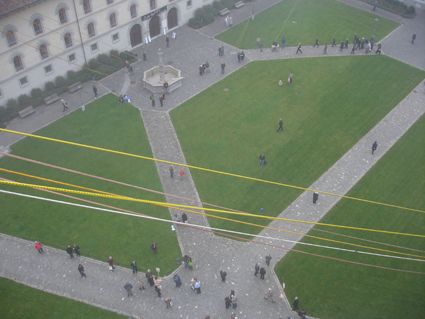
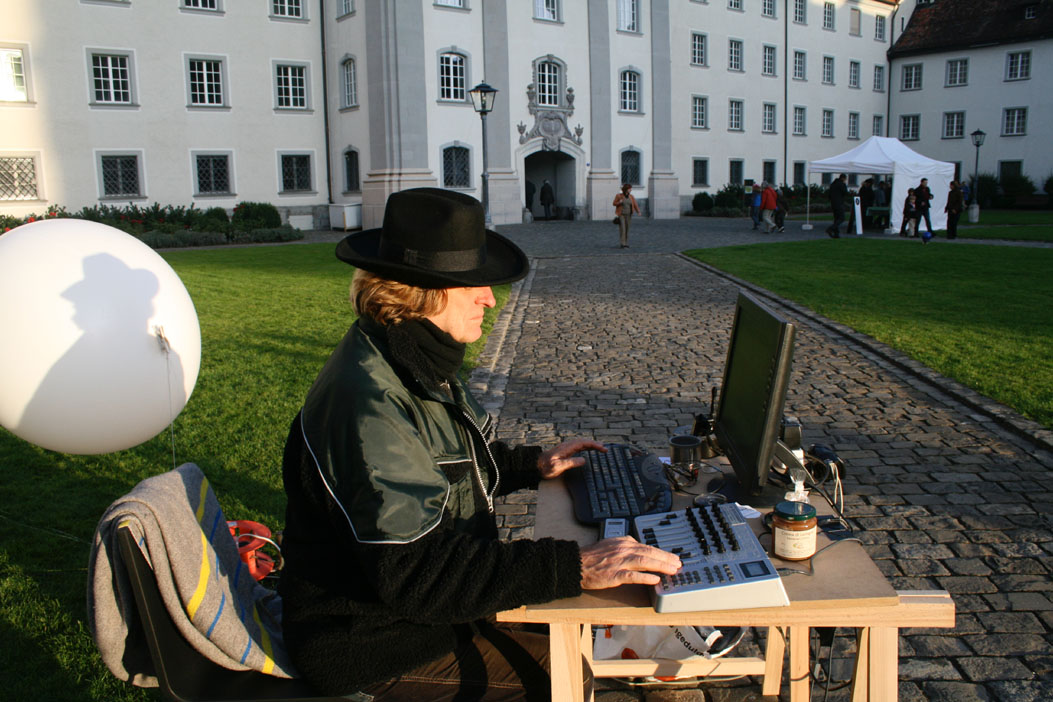
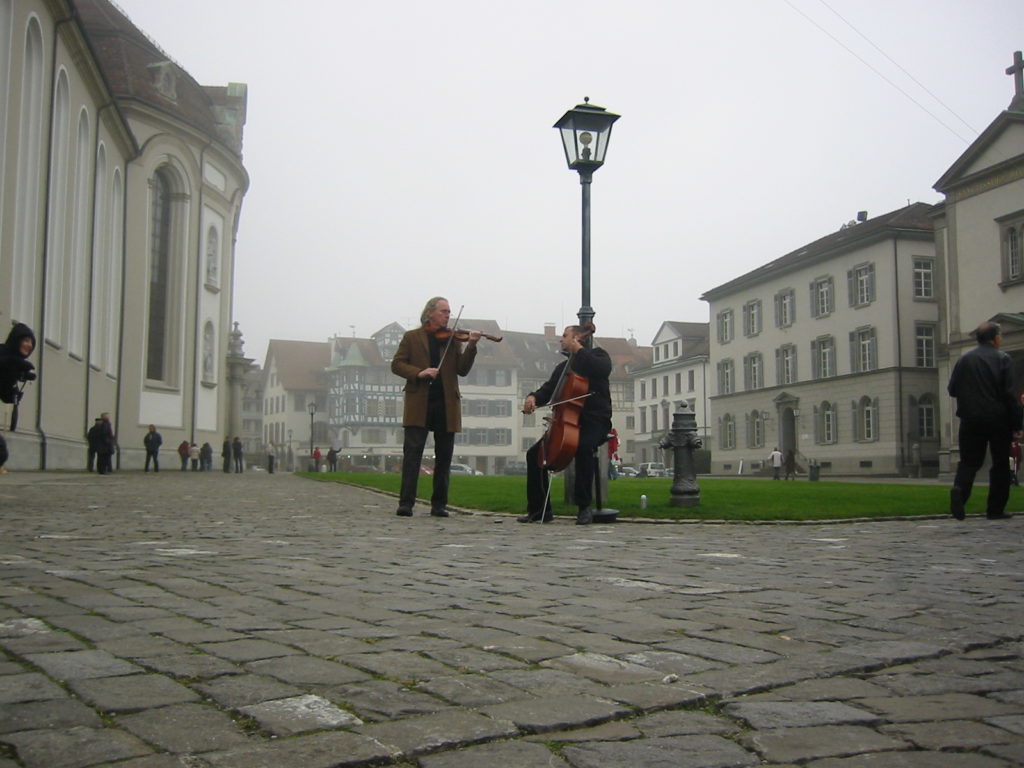
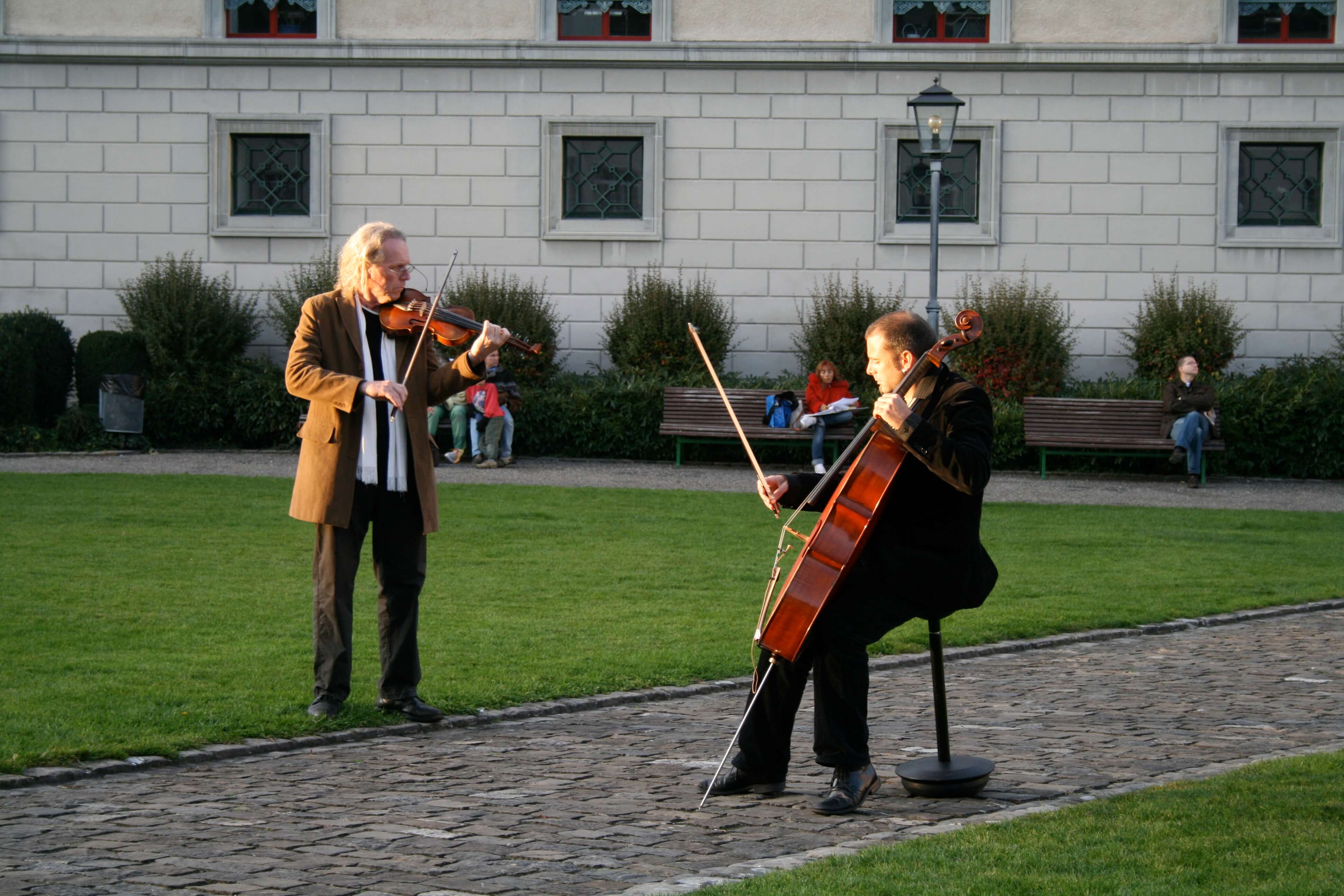
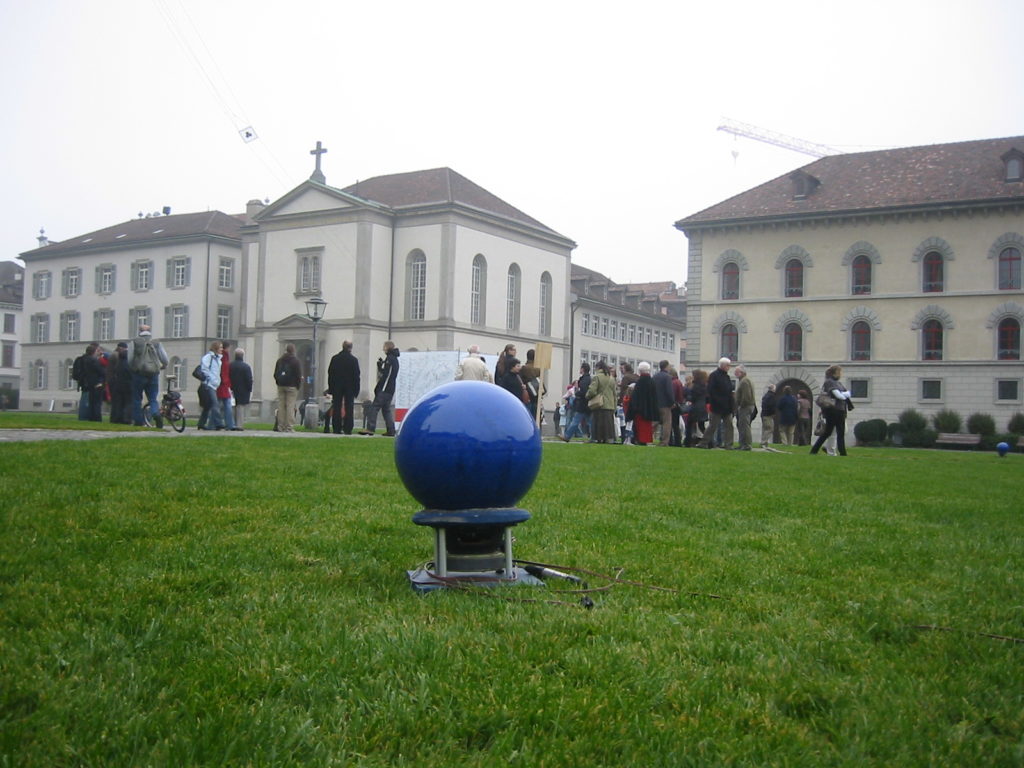
sound tower killespark Stuttgart
The sound tower was a sonic transformation of the existing Killesparkturm, an ingenious swinging suspended construction by Jörg Schlaich as one of 12 soundsculptures for the ISCM World New Music Festivals 2006. The sound park was curated by Carsten Seiffarth singuhr Berlin, featering soundinstallations by Sam Auinger/Bruce Odland, Andreas Oeldorp, Andres Bosshard, Erwin Stache. Stuttgart 2006.
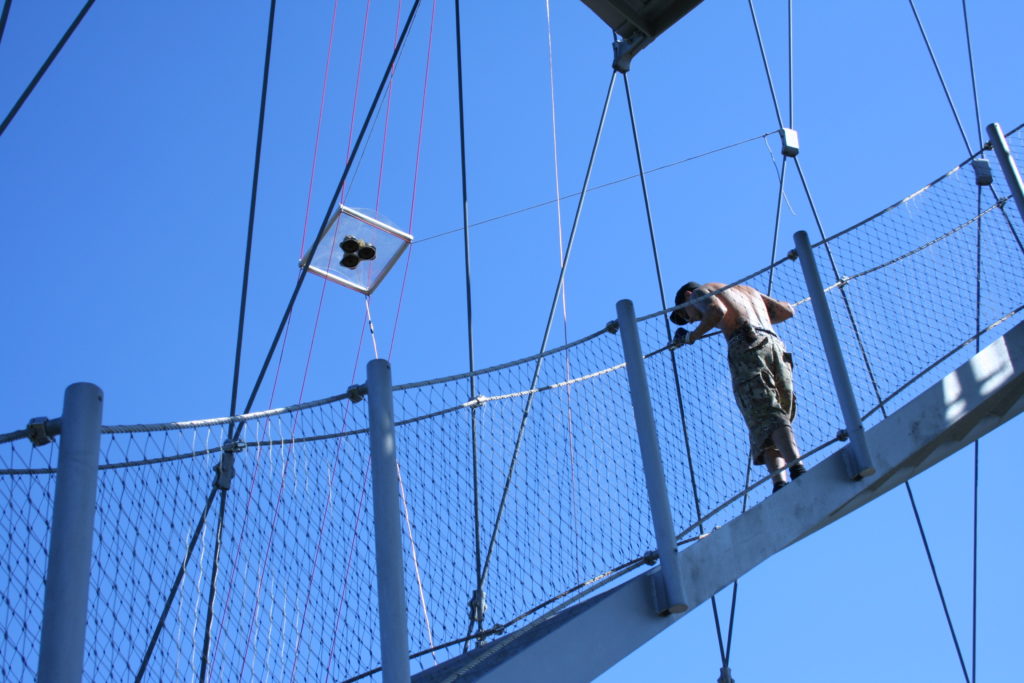
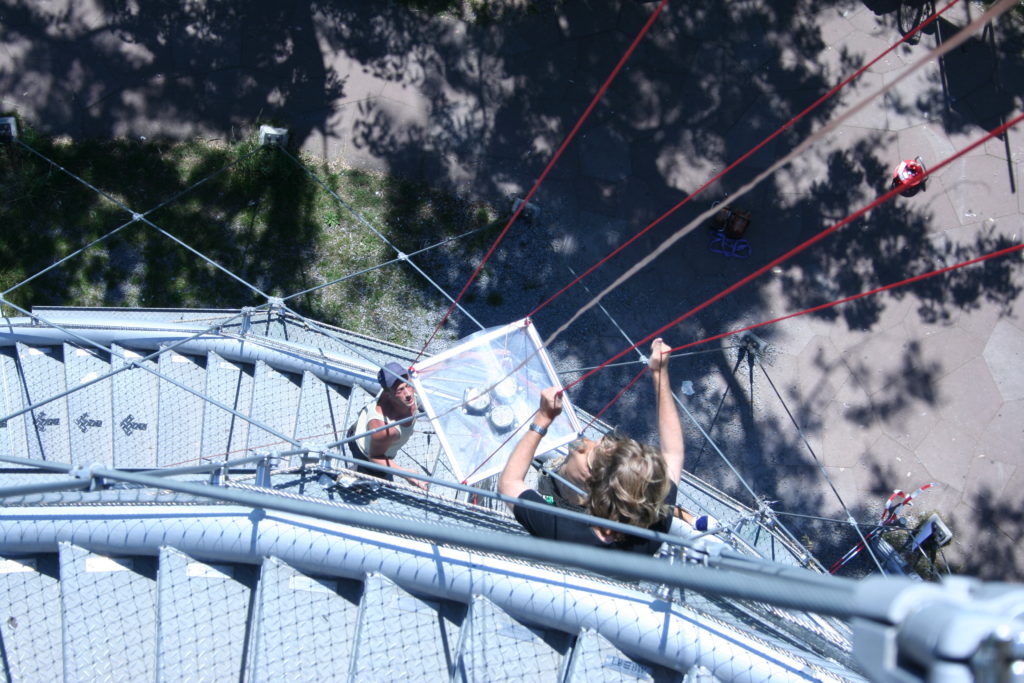
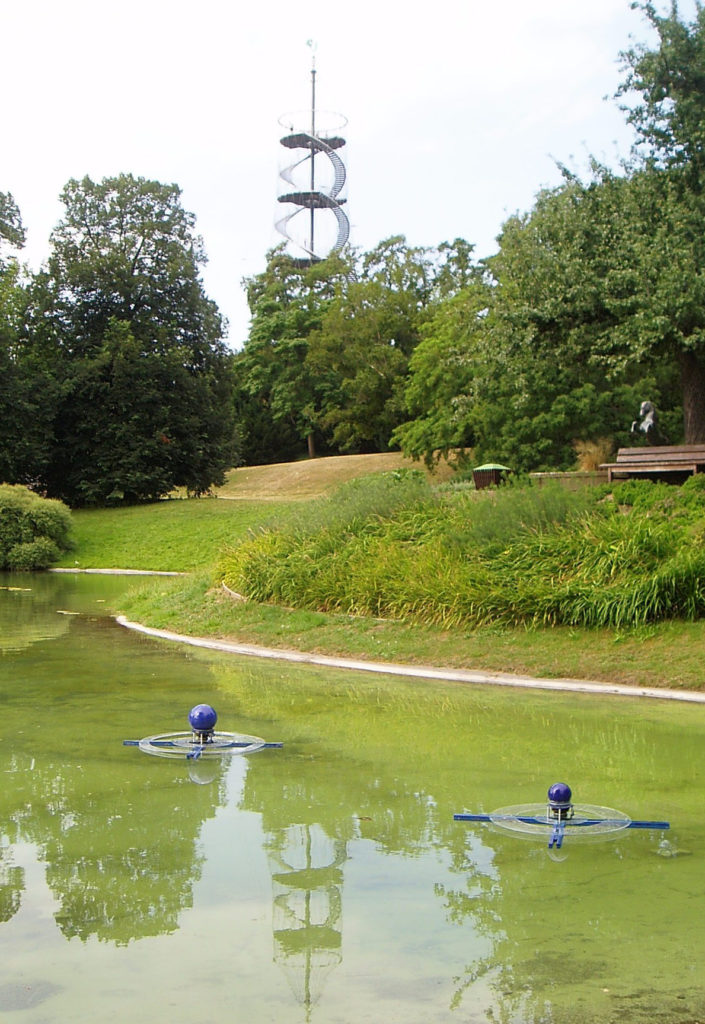
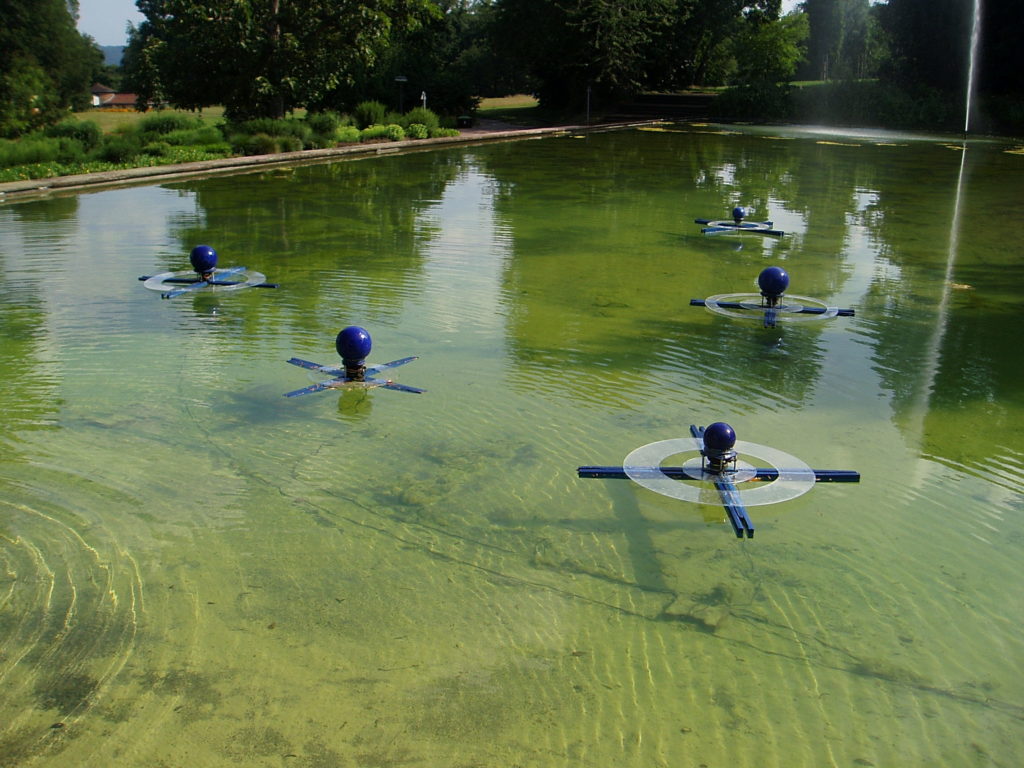

Klangturm
Listen! Sound tower expo 02, Arteplage on the lake of Biel 2002. Live during 22 weeks . Team of 80 musicians, 25 comissioned compositions and performances, permanent stream of live remix, ambient creation by our sound gardeners and klangregisseurInnen. The national exhibition was visitied during the summer of 2002 by 7 million visitors. The klangturm was open accessable all day. Inside: live cherophony of a vortex of 40 m hight. Outside: Sound intervention for a city square. Landscape: fare distance echoes and sound sphere over the lake of Biel. Media: Networking of live streams from mobile microphones on the arteplage, underwater microphones, earthquake survey and meteorolgical data of wind, humidity and temperature. Live feed for radio and television. The choreophonic stream of sounds was accesible by mobile calls on site for everybody. expo 02, Arteplage Biel, 15 May to 20 October 2002.

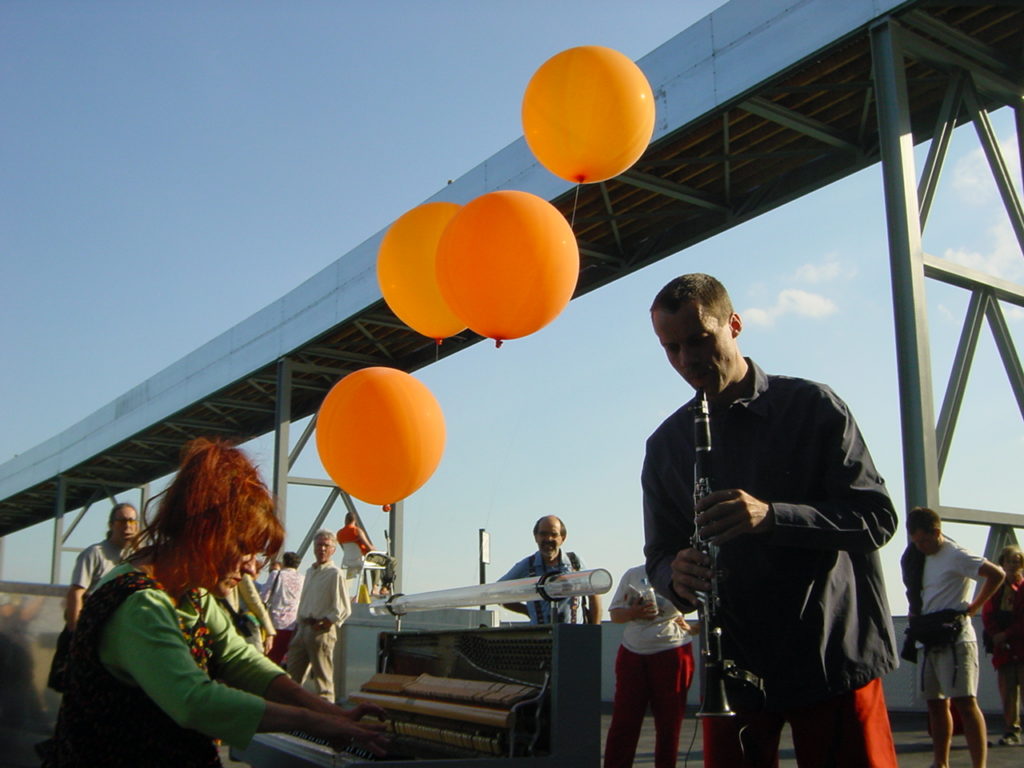
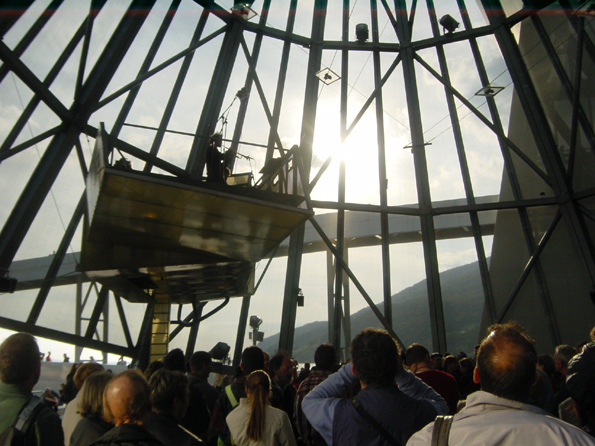
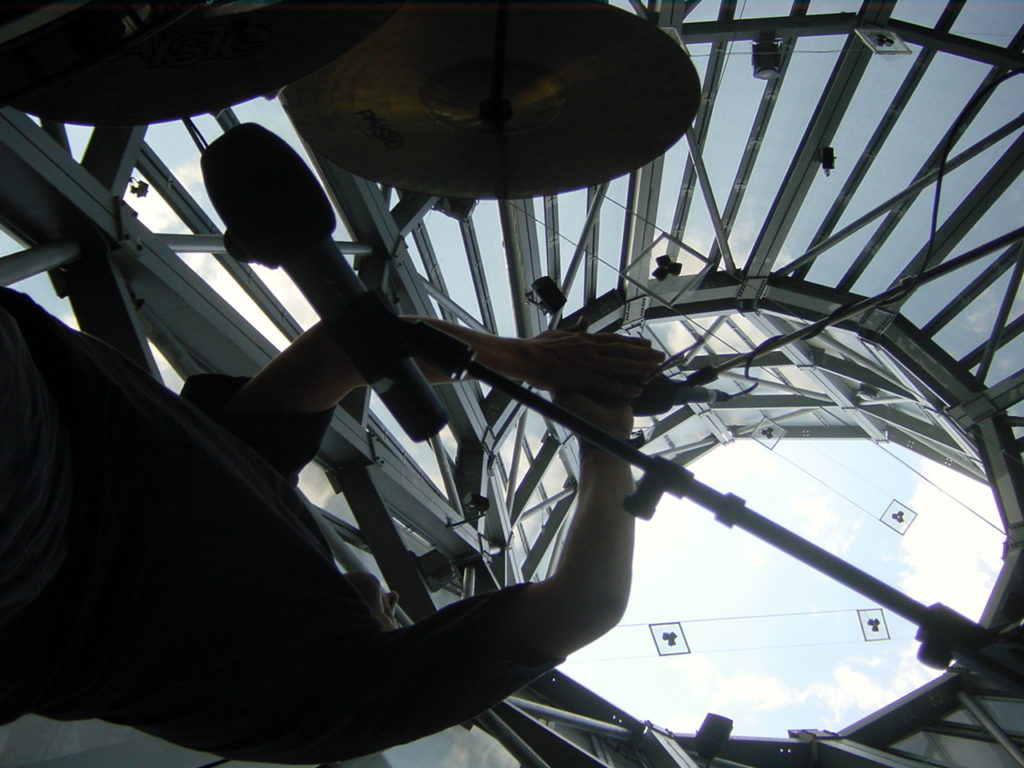
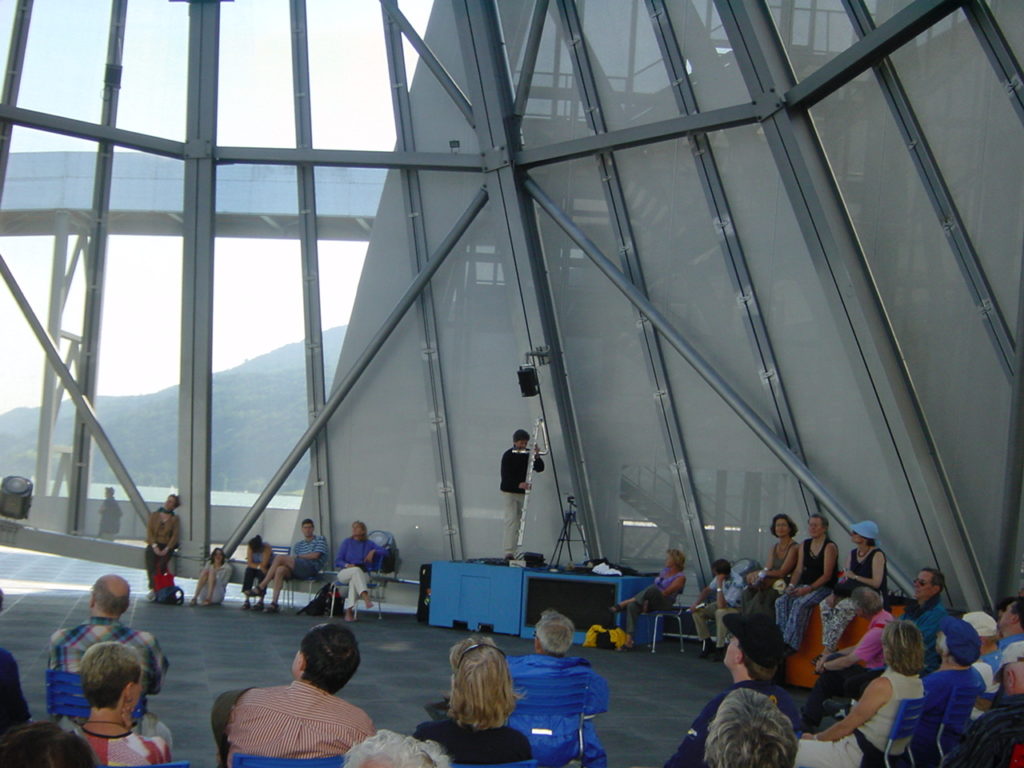

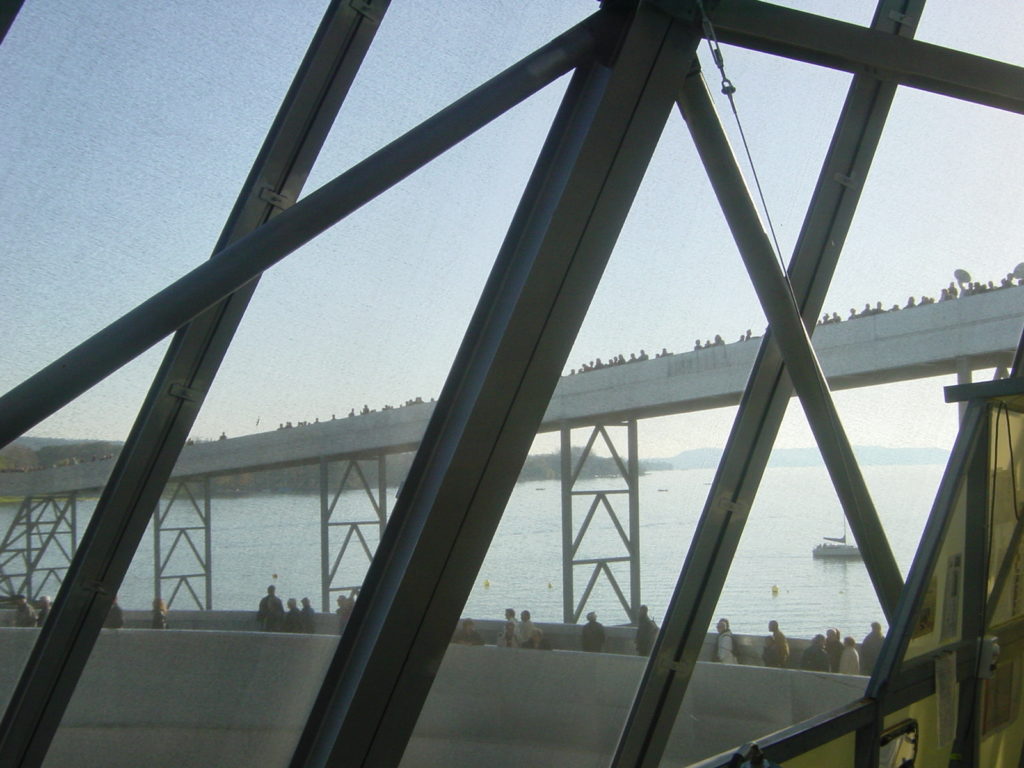
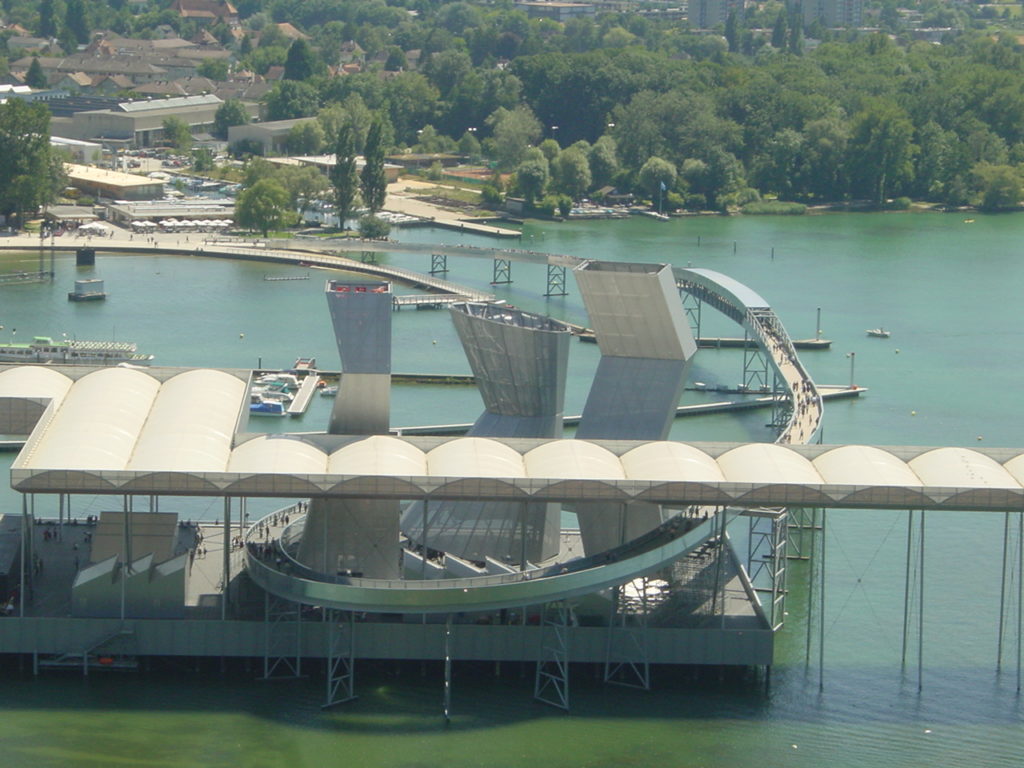
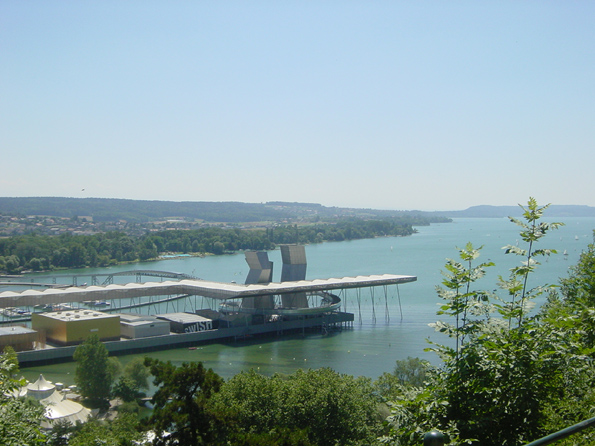
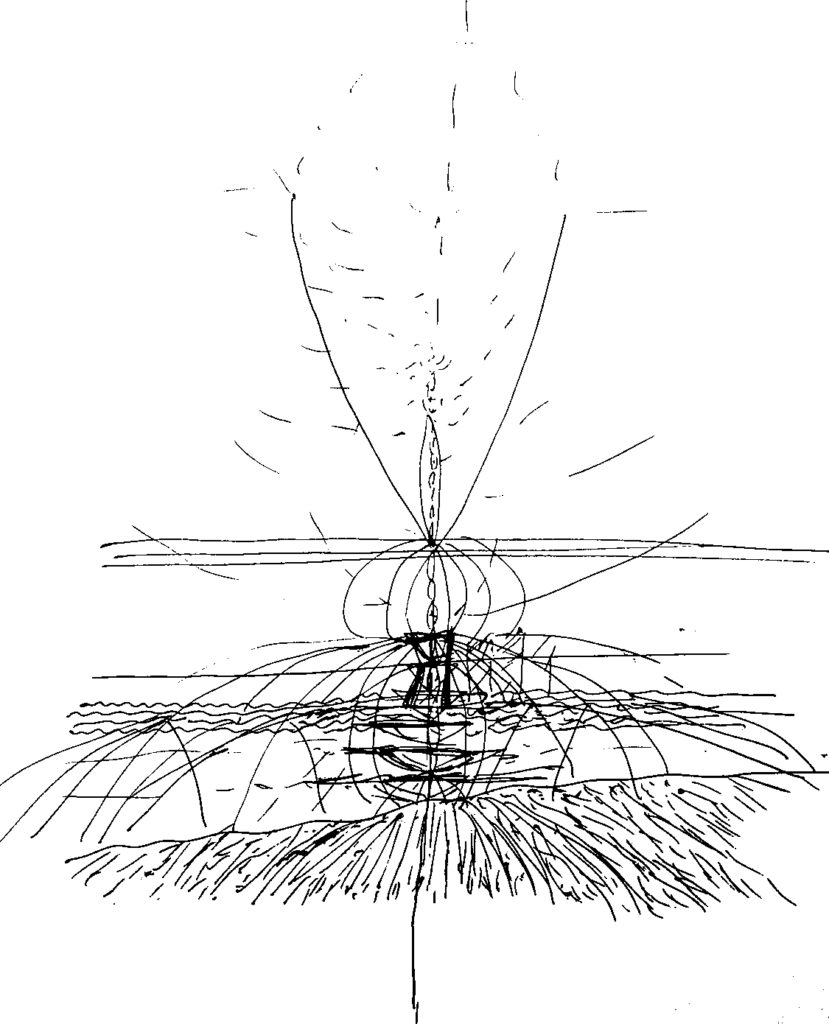
Eröffnung des Synchrotronrings des Paul Scherrer Instituts 1999
Tag der offenen Tür, organisiert von Martina Eberle. Villigen, Schweiz 1999.
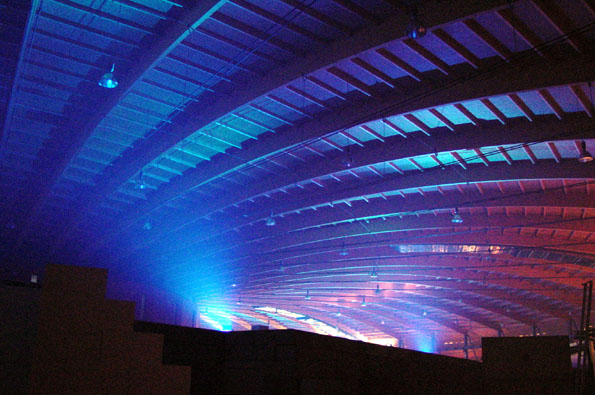
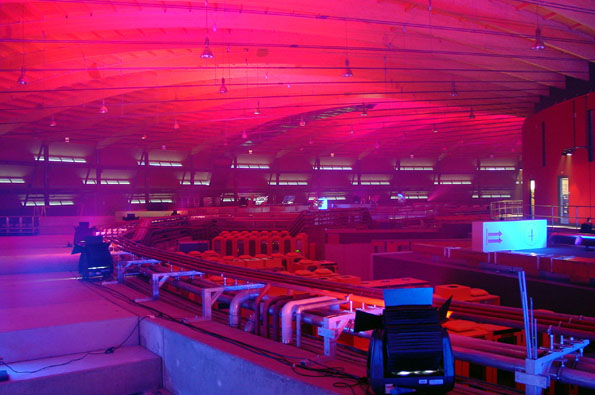
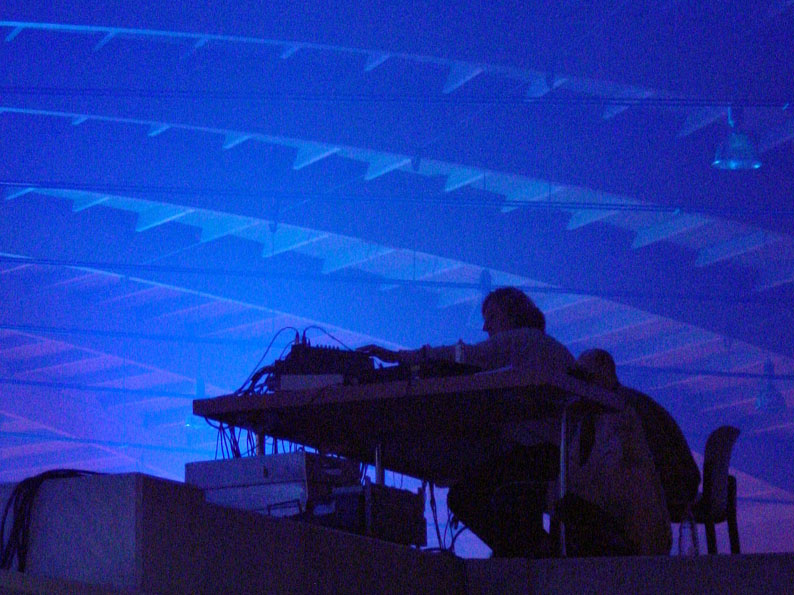
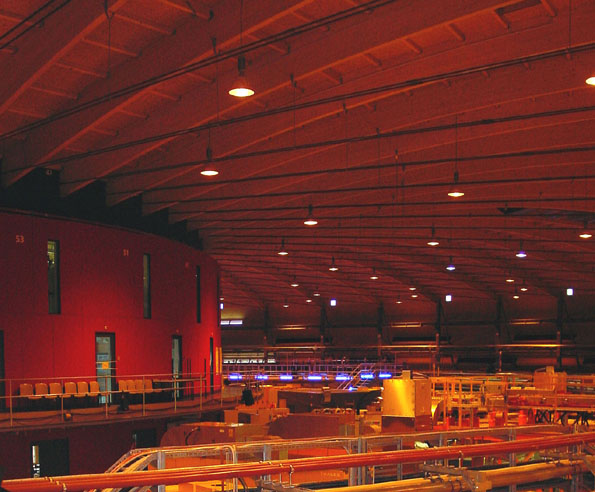
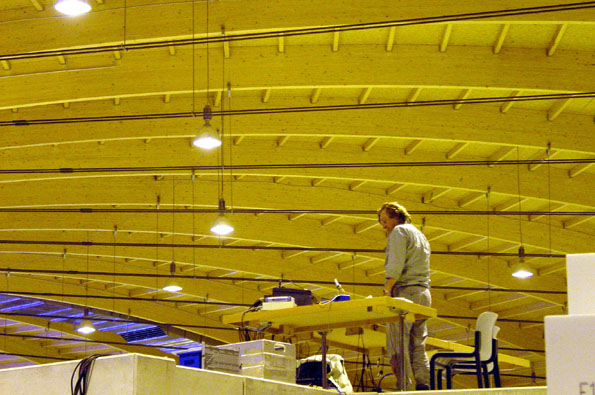
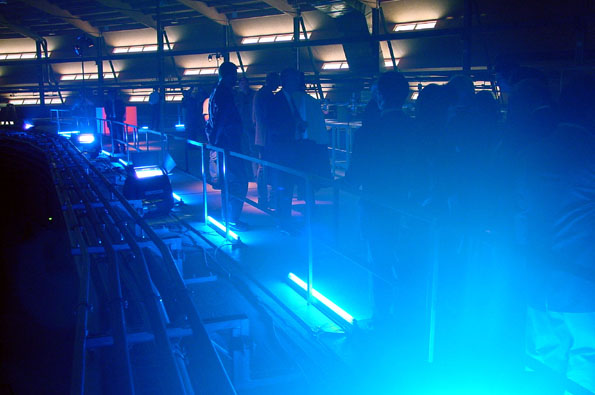
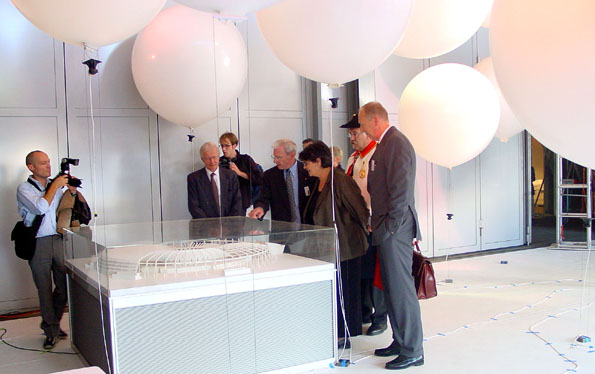
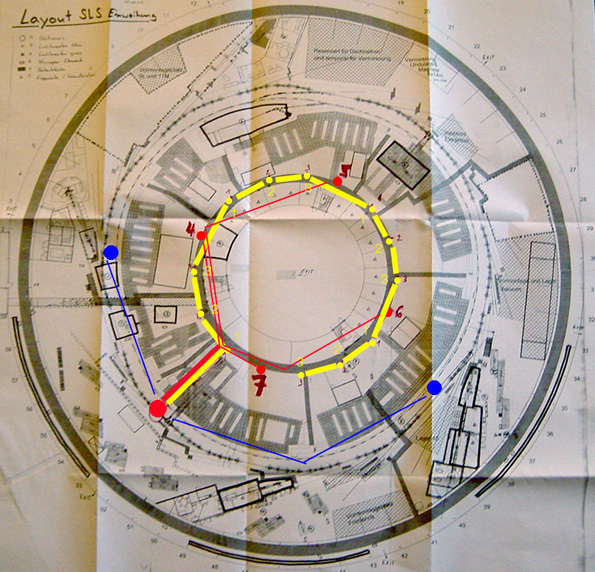
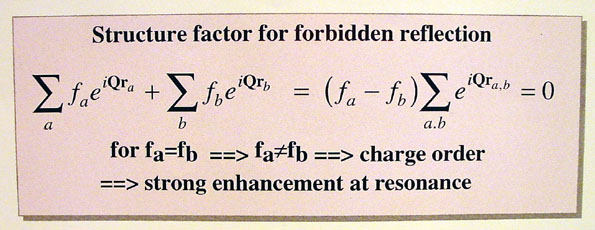
Echoes from the moon / the lunar Opera by Pauline Oliveros
Zeitflussfestival Salzburg 15. August 1997, 21:00 Uhr Domplatz. Pauline Oliveros, Akkordeon. Andres Bosshard, Moon Eye, Klangarchitektur für die räumliche Wiedergabe der live zu übertragenden Mondechos. Helmut Klein, O E 1 TKW Übertragungstechnik. Peter Riml, O E 9 XX1 Übertragungstechnik.
Pauline told me about her piece “Echoes From the Moon’ in which she uses the moon as a delay device. In “Echoes From the Moon”, she plays “aural tennis” with the moon. Yes, her music literally travels to the moon and bounces back to earth. She described: “The antenna has to be large enough to receive the returning signal from the moon. Conditions are constantly changing – sometimes the signal is lost as the moon moves out of range and has to be found again. Sometimes the signal going to the moon gets lost in galactic noise”.The delay is around 2 and 1/2 seconds and it seems to shift slightly downward in pitch – a Doppler effect caused by the motion of the moon moving relative to the earth – like the whistle of a train as it rushes past”. “The performance of “Echoes of the Moon” in the Salzburg Festival included a creative setting of the speakers by Sound artist Andres Bosshard. Mr. Bossard placed the sounds coming from the moon on speakers placed high above the audience suspended between the tower of the dome and the roofs of the palaces around the site of the performance. The sounds coming from earth were located at ground level. “The audience will be inside the “moon space” and hear the music created in this large spatial duo”. Listening to Pauline Oliveros by Guillermo Galindo, Nature Sounds Society Journal, Spring 1999.
Following is a description of a work that I did first in 1987 and again last night at California State University, Hayward. Echoes From the Moon is scheduled for St. Polten May 30-31 and Salzburg in August in Austria. The lunar eclipse from the Hayward Amphitheater was gorgeous. The night was clear and she rose above the trees an orange mistiness. As she climbed the sky the bright sliver emerged slowly from the black shadow – crystal clear. The set up for Echoes From the Moon involved Mark Gummer – a ham radio operator in Syracuse NY. Mark was standing by with a 48 foot dish in his back yard. I sent sounds from my microphone via telephone line in Hayward to Mark and he keyed them to the moon with his Ham Radio rig and dish and returned the echo from the moon. The return was 2 & 1/2 seconds. Scott Gresham-Lancaster was the engineer and organized all the set up. Scott also arranged the contact with Ham Radio operator Dave Olean in 1987 when I did the first version of Echoes From the Moon in Maine. When the echo returned to the audience in the Hayward University Amphitheater they cheered. Later in the evening Scott set up the installation so that people could que up to talk to the moon. There was a long line of all age people from the audience who participated. People seemed to get a big kick out of hearing their voices return – processed by the moon. There is a slight Doppler shift on the echo because of the motion of both earth and moon. This marks the premiere of the installation – Echoes From the Moon as I originally intended. The set up for the installation involved Don Roberts – Ham Radio Operator near Seattle and Mike Cousins at Stanford Research Institute. The dish at SRI is 150 feet in diameter and was used to receive the echoes after Don keyed them to the moon. With these set ups it was only possible to send short phrases of 3-4 seconds. The goal for the next installations would be to have continuous feeds for sending and recieving so that it would be possible to play with the moon as a delay line. Echoes From the Moon will be done in St.Polten Austria May 30-31 as part of a festival and in Salzberg in August. It could be possible to have a telephone hook up to the USA at selected locations for a kind of simulcast.
The method that we used to get sound to the moon: Telephone line for sending to Ham Radio operator Mark Gummer in Syracuse NY. He keyed the sound to the moon using a 48 foot dish antenna from his back yard. He returned the sound in 2 &1/2 seconds from his antenna through a second telephone line. Later in the evening there was audience participation: Telephone line to Ham Radio operator Don Roberts in Seattle who keyed the sounds from his antenna to the moon. The returns were picked up by the 150 foot dish antenna at Stanford Research institute and sent back through a second telephone line. Each antenna has to track the moon to keep the broadcast in focus. Otherwise the signals disappear into galactic noise. I had five different sounds to send to the moon in a kind of demo for the audience: Conch Shell, gas pipe whistle, Tibetan Cymbals, Wood block and temple block. The best sounds were the gas pipe and Tibetan Cymbals because of the narrow bandwidth of the telephone line. This demo was done with Mark Gummer keying the sounds and receiving the returns. Later with the audience participation Don Roberts in Seattle keyed the sounds and the returns went to SRI with the big 150′ dish. The voices worked most of the time. The moon has to be tracked by the operators continually. Sometimes the galactic noise takes over when the moon moves out of range. www.kunstradio.at/VR_TON/texte/4.html.
Salzburg, 15.August, 21:00 Uhr Domplatz.
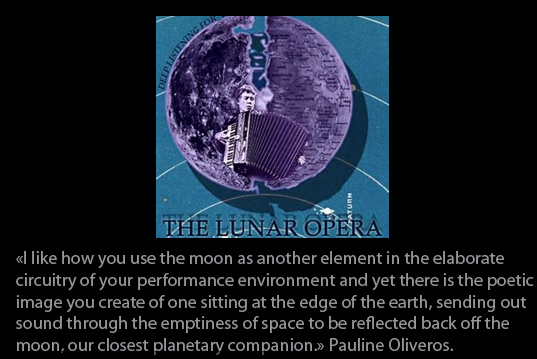
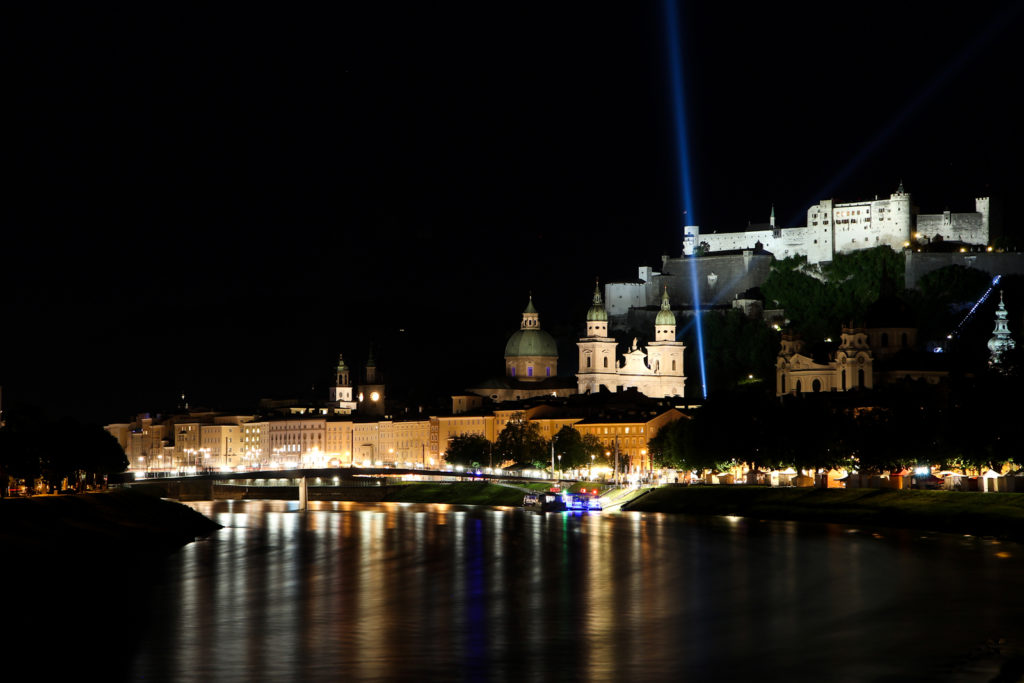
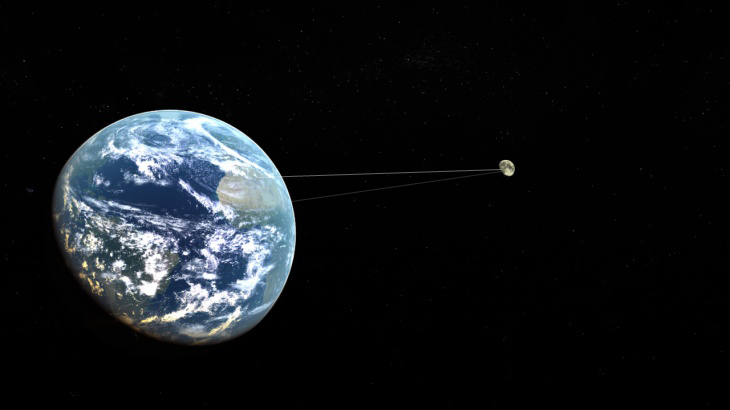
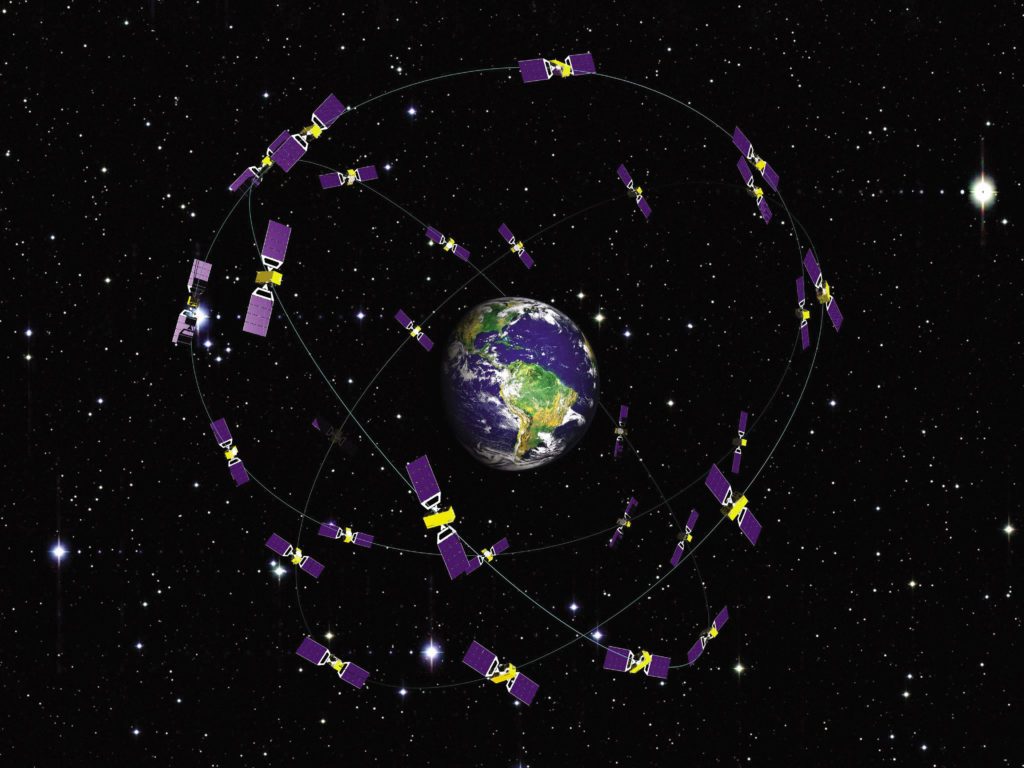
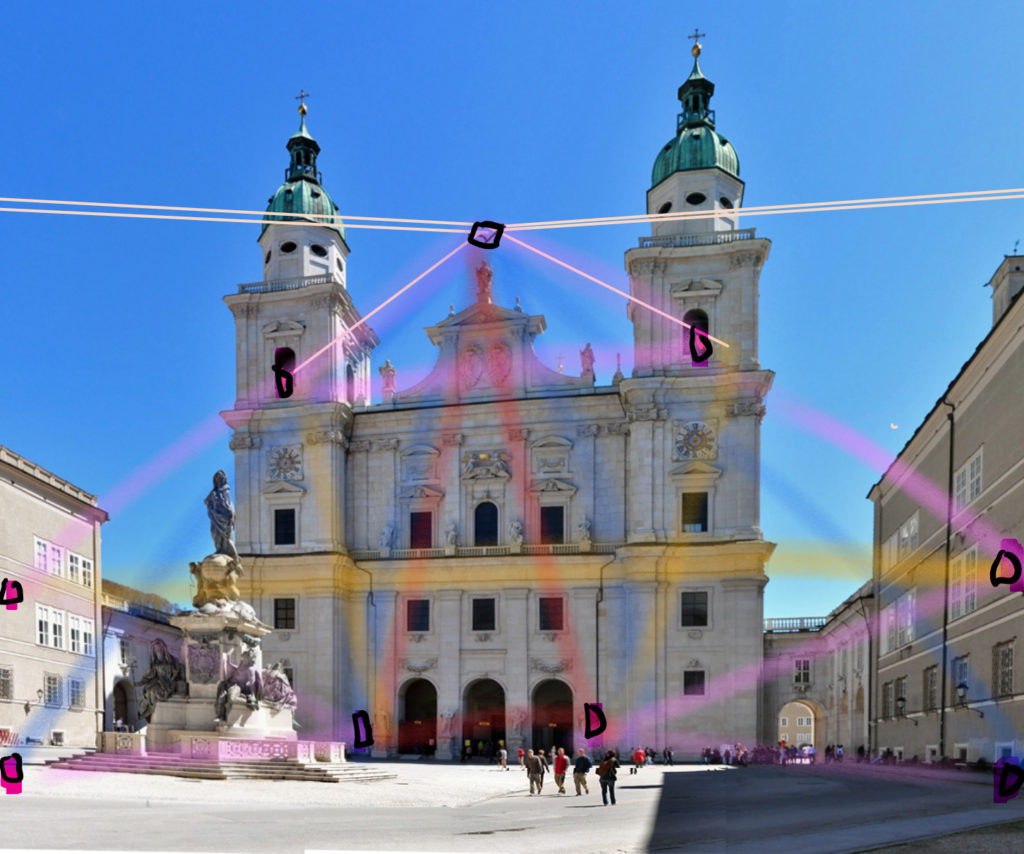
Telefonia 1991
Säntis, observartory plattform – Winterthur, Sulzer Halle – New York, Hall of Science, Flushing Meadows. Telematic live event linking three locations. Video satellite link for 8 hours. Three ground telephone lines for audio and datalines during three days. Two continents, 8 hours time difference: simultaneous sun rise on the peak of Säntis, midnight in New York.
Winterthur: Andres Bosshard cassette machine/interactive electronics, Jin Hi Kim komungo, Ron Kuivila interactive electronics, Paul Lovens drums (first part), Bernard Mixon voice, Phil Wachsmann violin, Jacques Widmer drums (first part). Walter Reinhard sound and Mark Ofner video fot satellite down link. Ron Kuivala, Der Schnüffelstaat, interaktive Installation, Daniela Zehnder, video and light installation, scenography.
Säntis: (2nd part) Paul Lovens drums singing saw, Jacques Widmer drums. Sabine Boss live video and sound to uplink.
New York: Terry Adkins kora, David Gattiker Cello, Jon Laxdal “Der Weltensänger” voice, Christian Marclay turntables, Butch Morris cornet, Günter Müller drums electronics, Stella Varveris live video,Tom Hamilton sound and Michael Kondos video for satellite uplink, John Driscoll, Shadow interactive Inc, rotatable loudspeakers.
Winterthur, Säntis, New York, May 31st to June 2nd 1991.
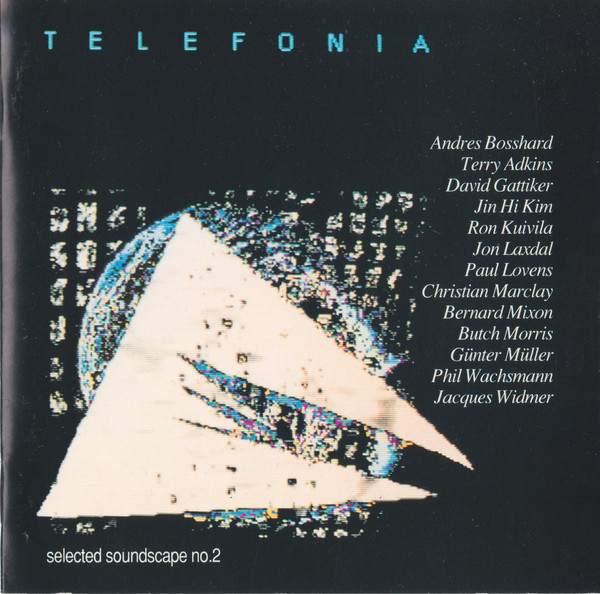
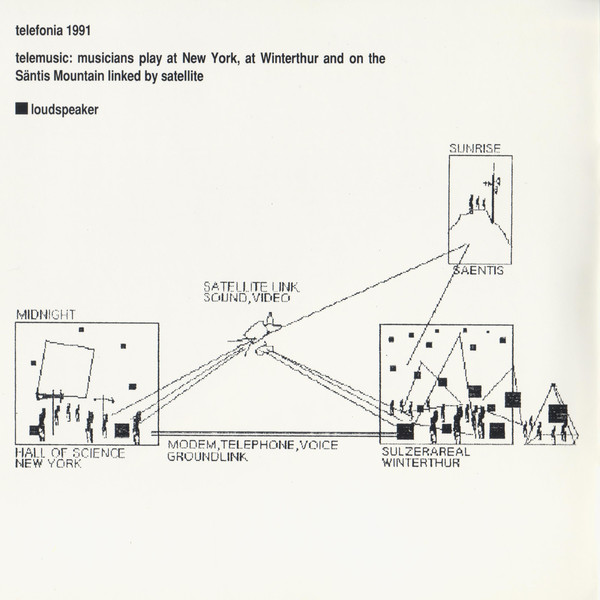
Klangbrücke Bern 1990
Hans Anliker, Conrad Bauer, Johannes Bauer, Posaunen; David Gattiker, Cello; Butch Morris, Cornet und conducting; Doro Schürch, Daniel Mouthon, Stimme; Phil Wachsmann Violine; Günther Müller Schlagzeug, Elektrozeug, Jacques Widmer, Schlagzeug, Andres Bosshard, Kassettenmaschinerie und Klangraum; Daniela Zehnder, Licht und Projektionen; Claire Bonney Fotos. Bern, Kunstmuseum und Lorrainebrücke, 13.-15. Juni 1990.
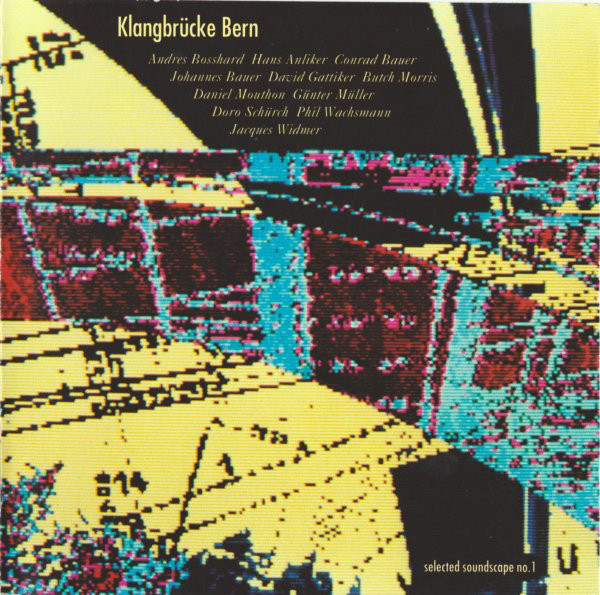
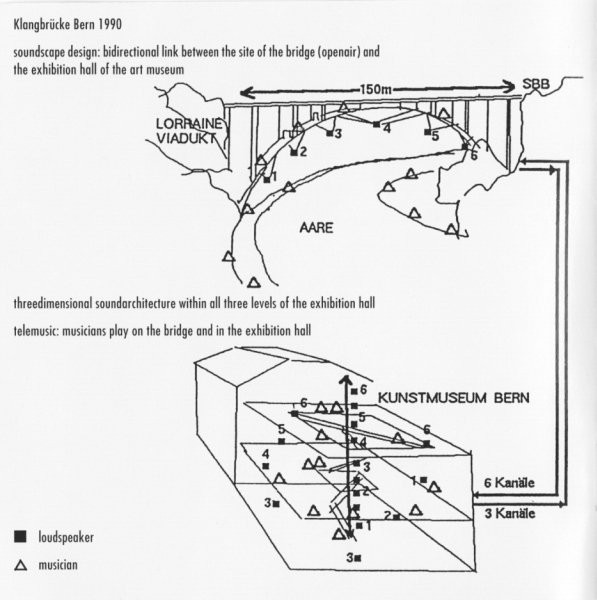
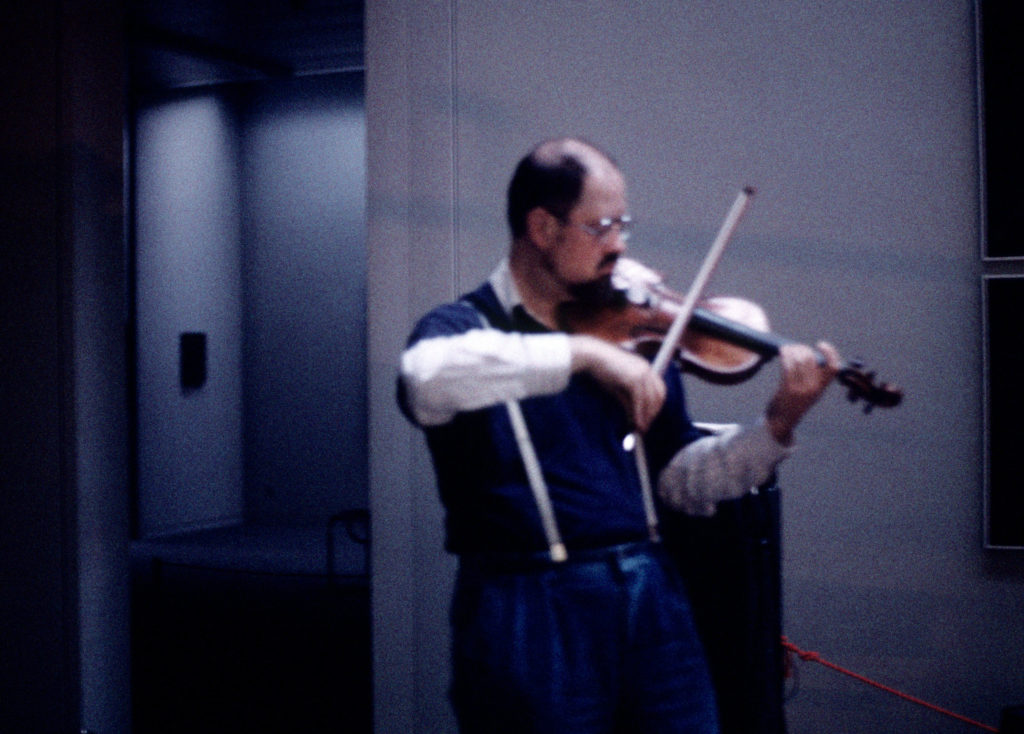
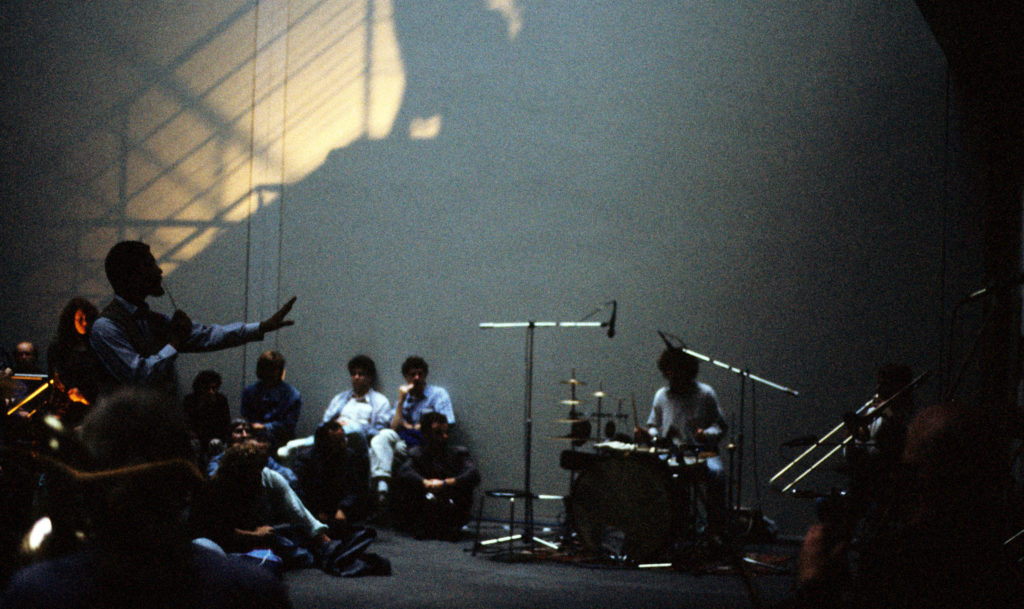
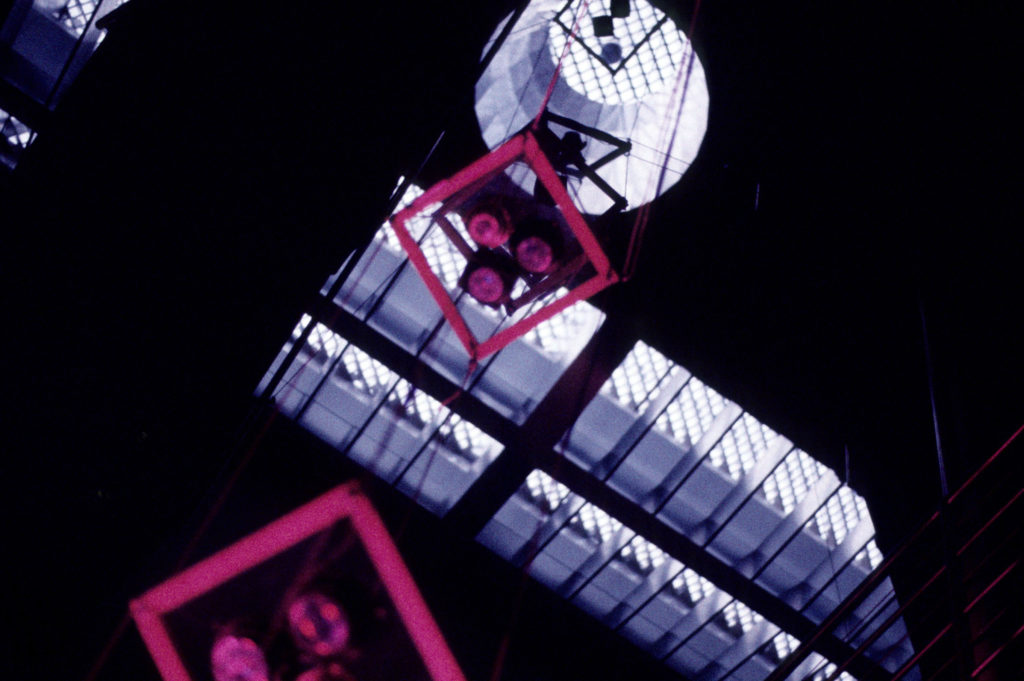
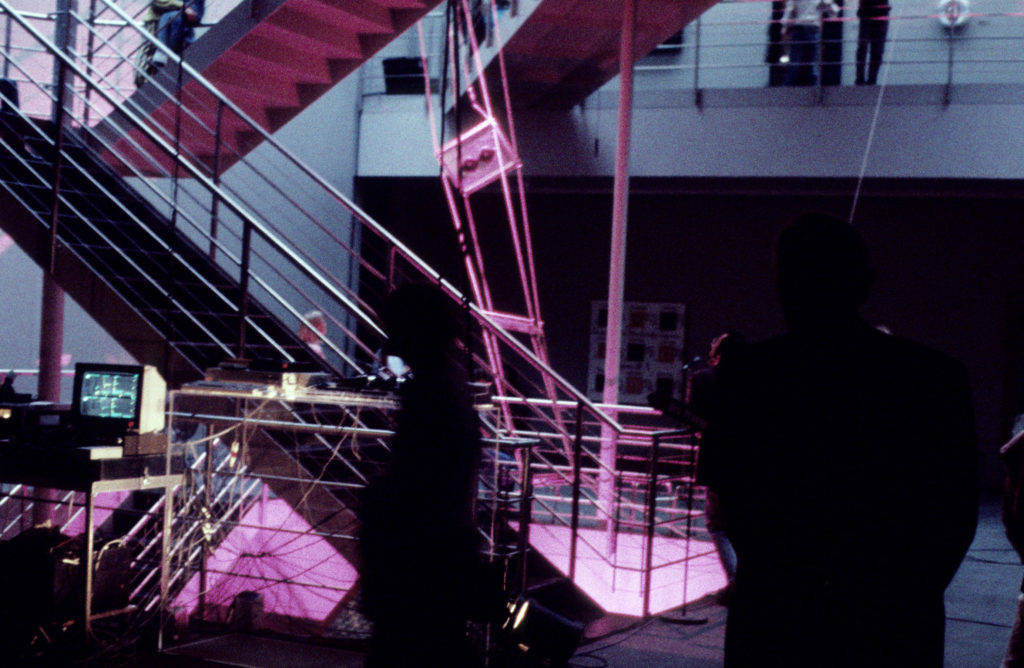
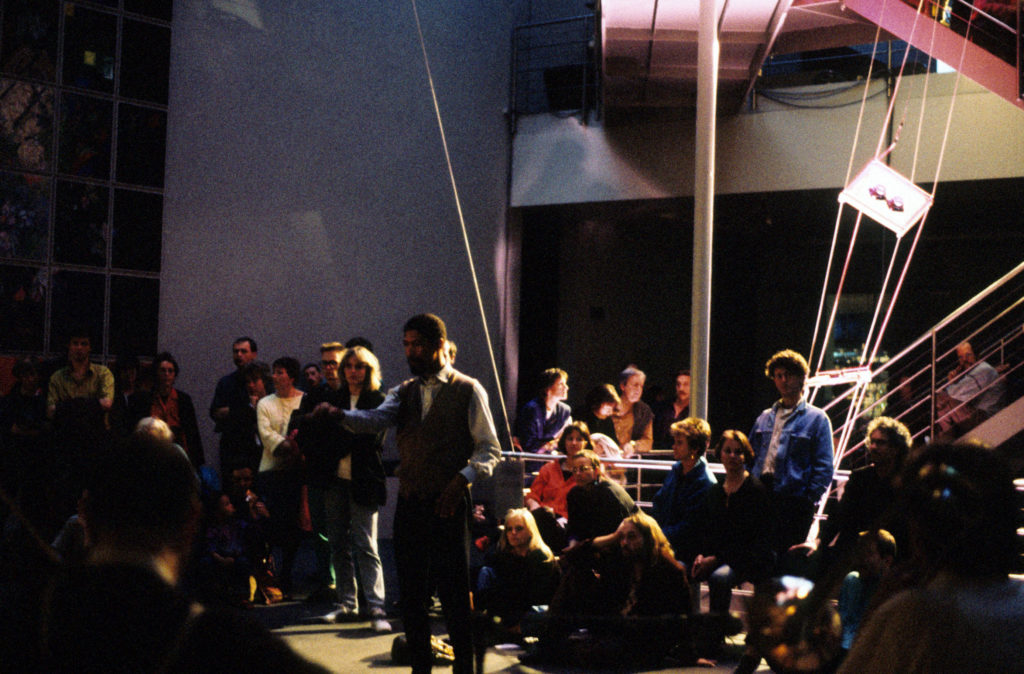
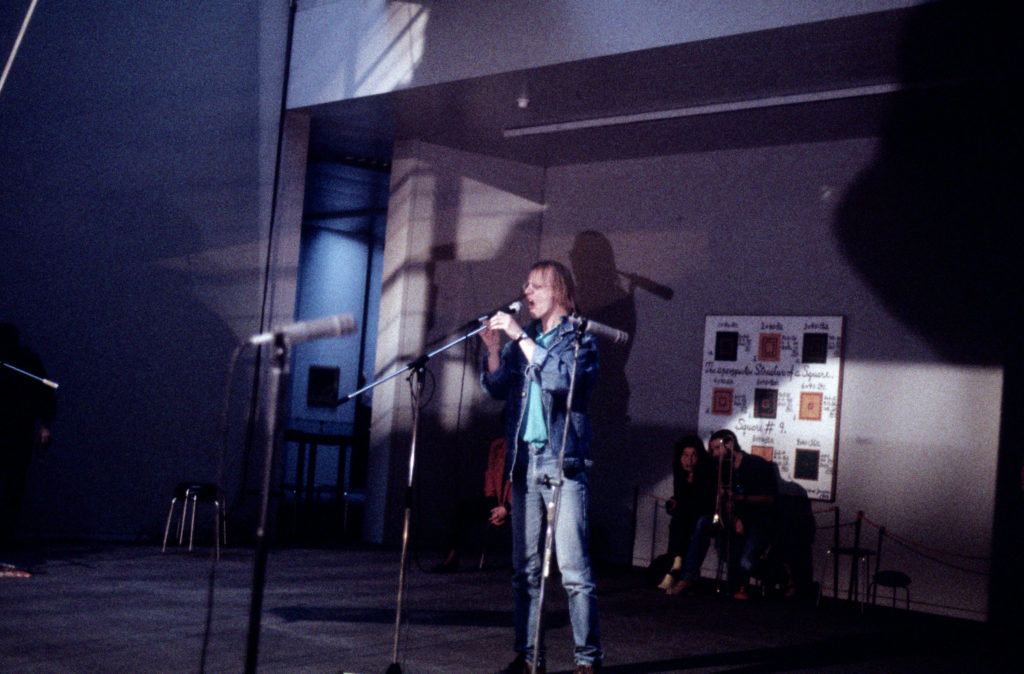
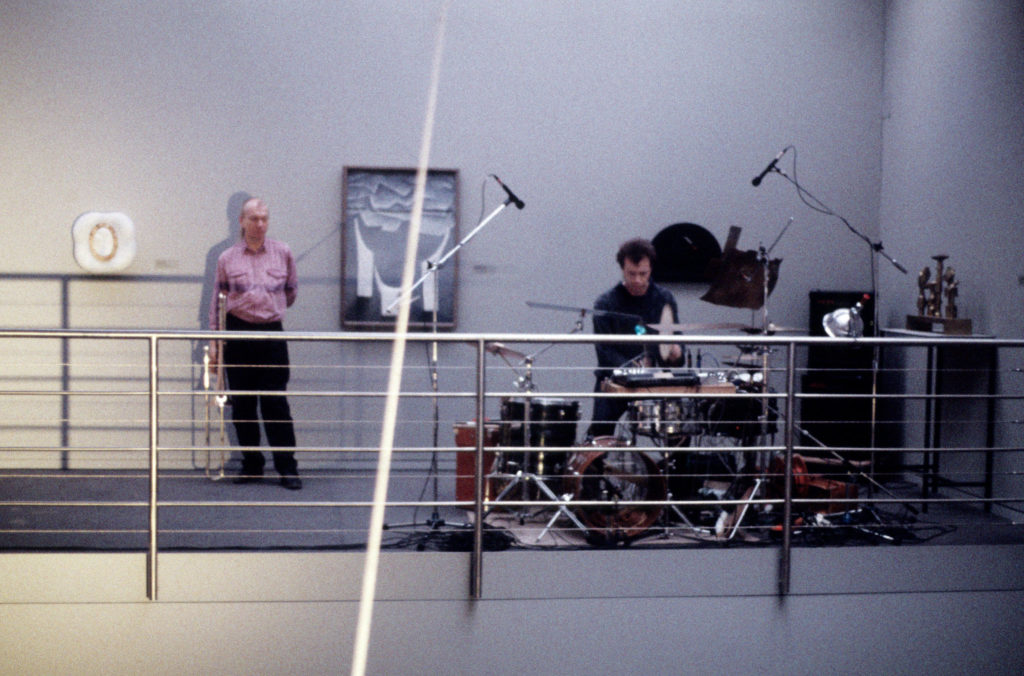
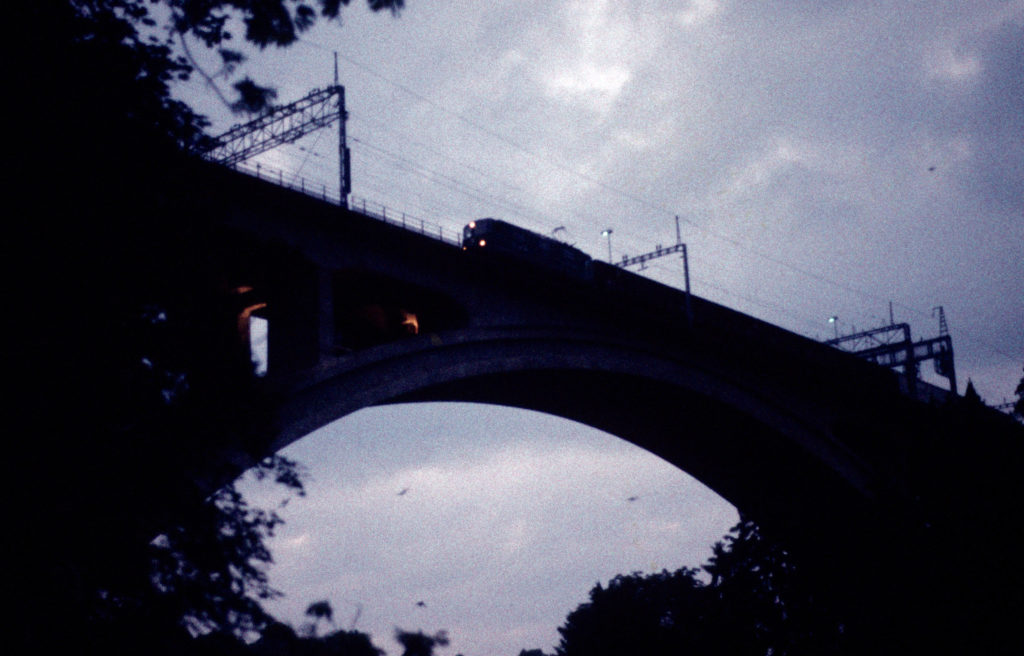
Staudammkonzert Fusio Valle Maggia
Riflessione di una Diga, sound reflection of a power damm, outdoor event for M.I.C., festival for improvised music in Ascona 1987, organised by Guy Bettini.


